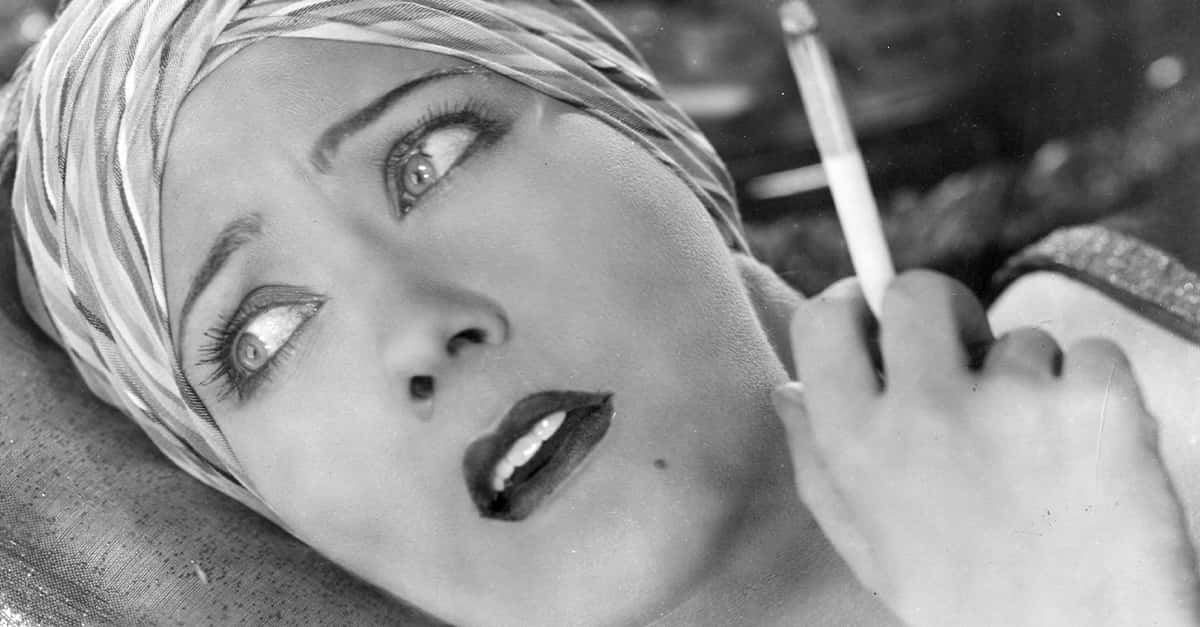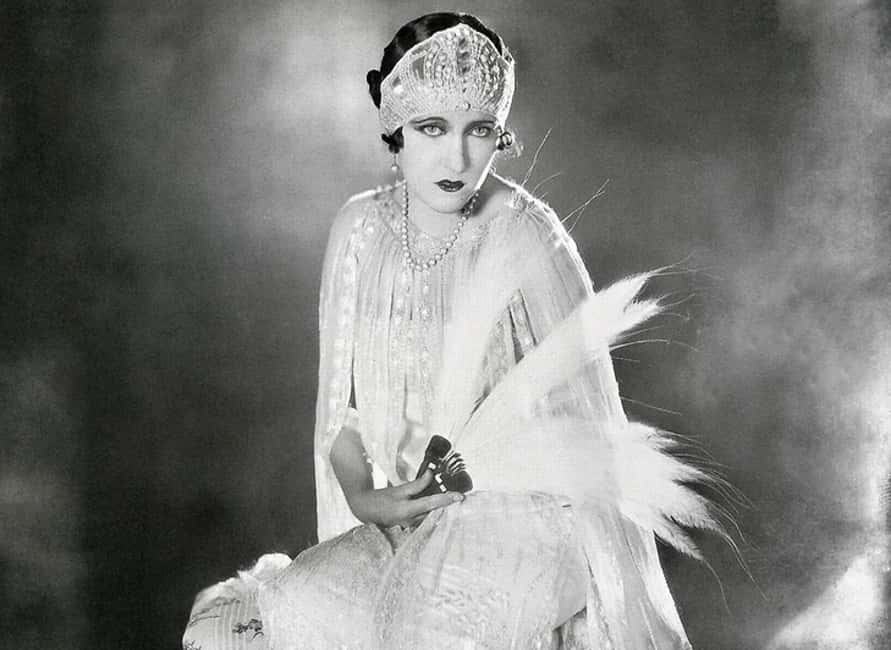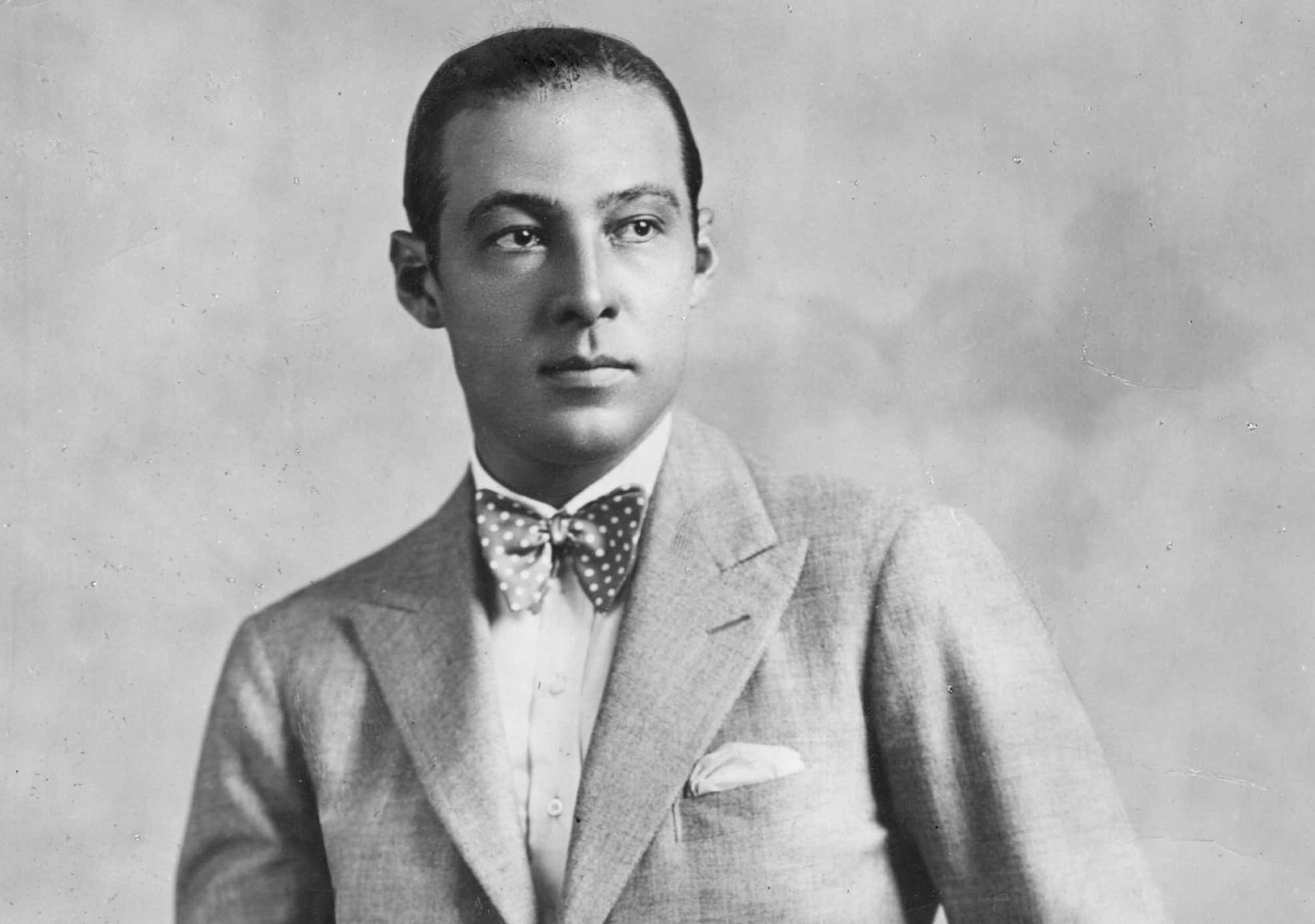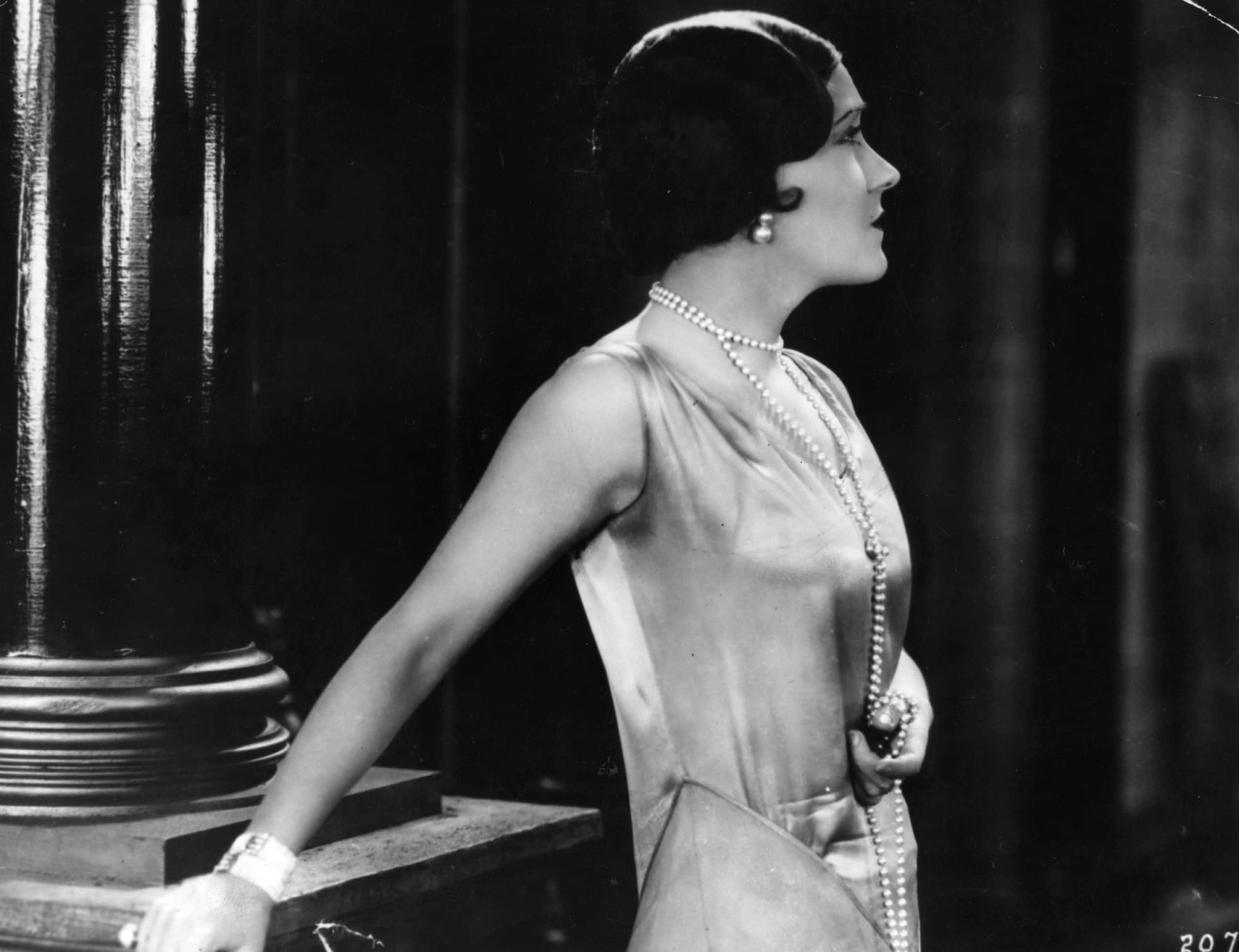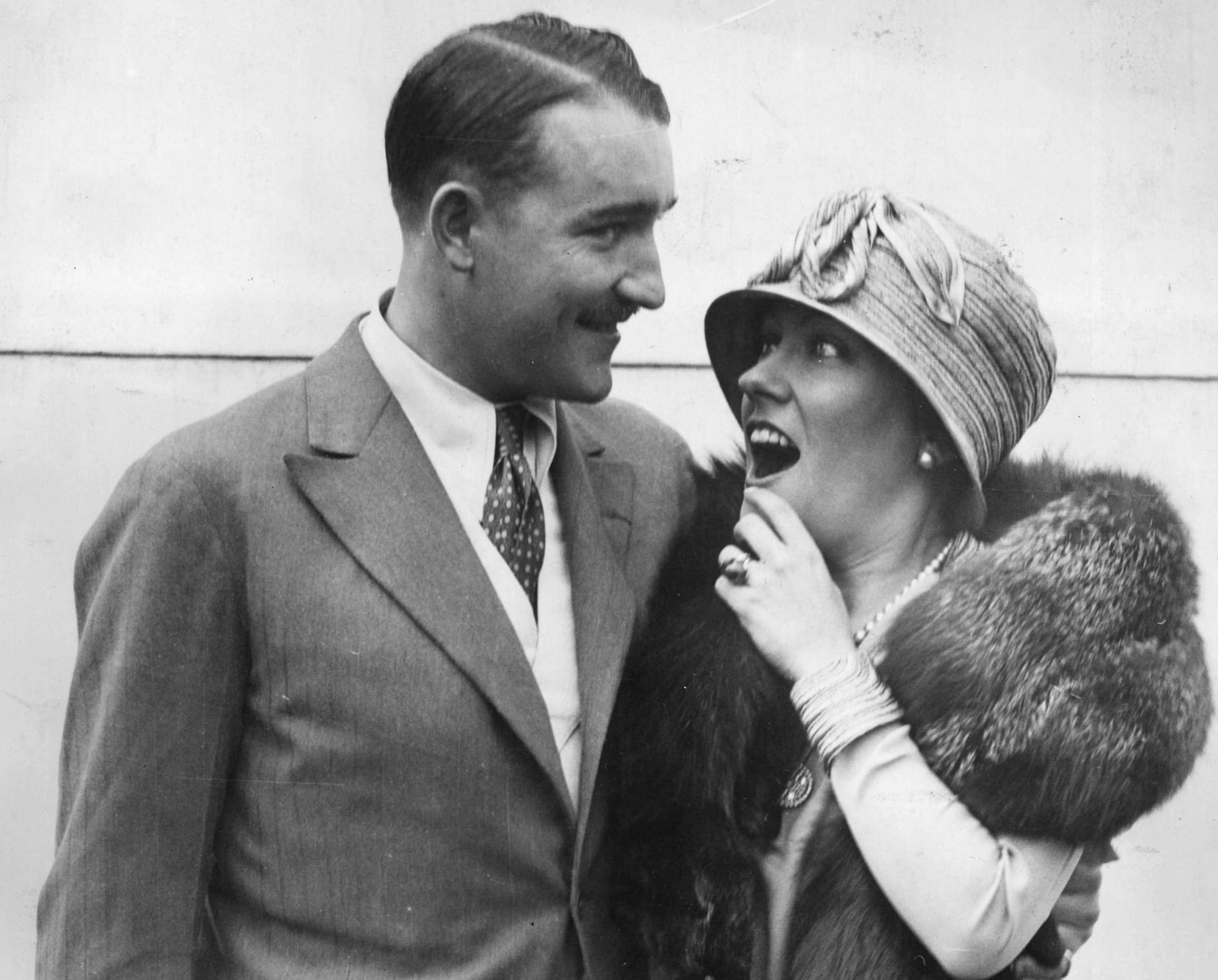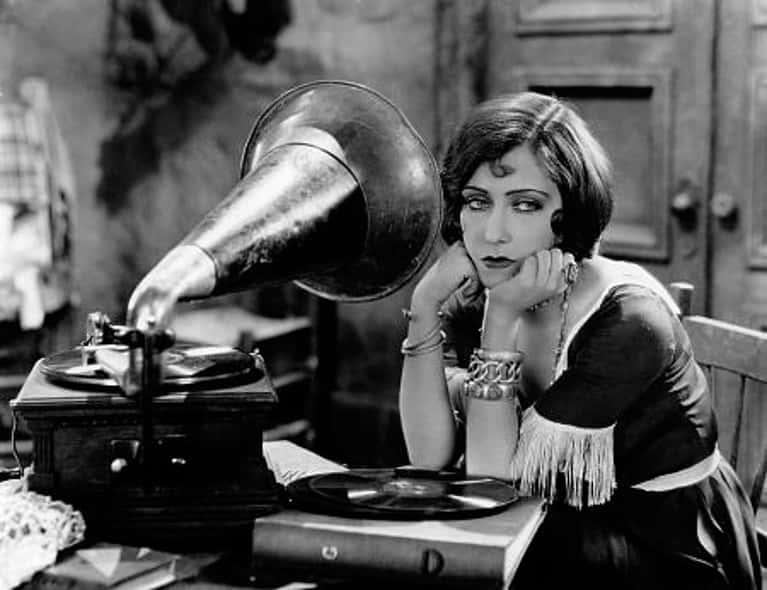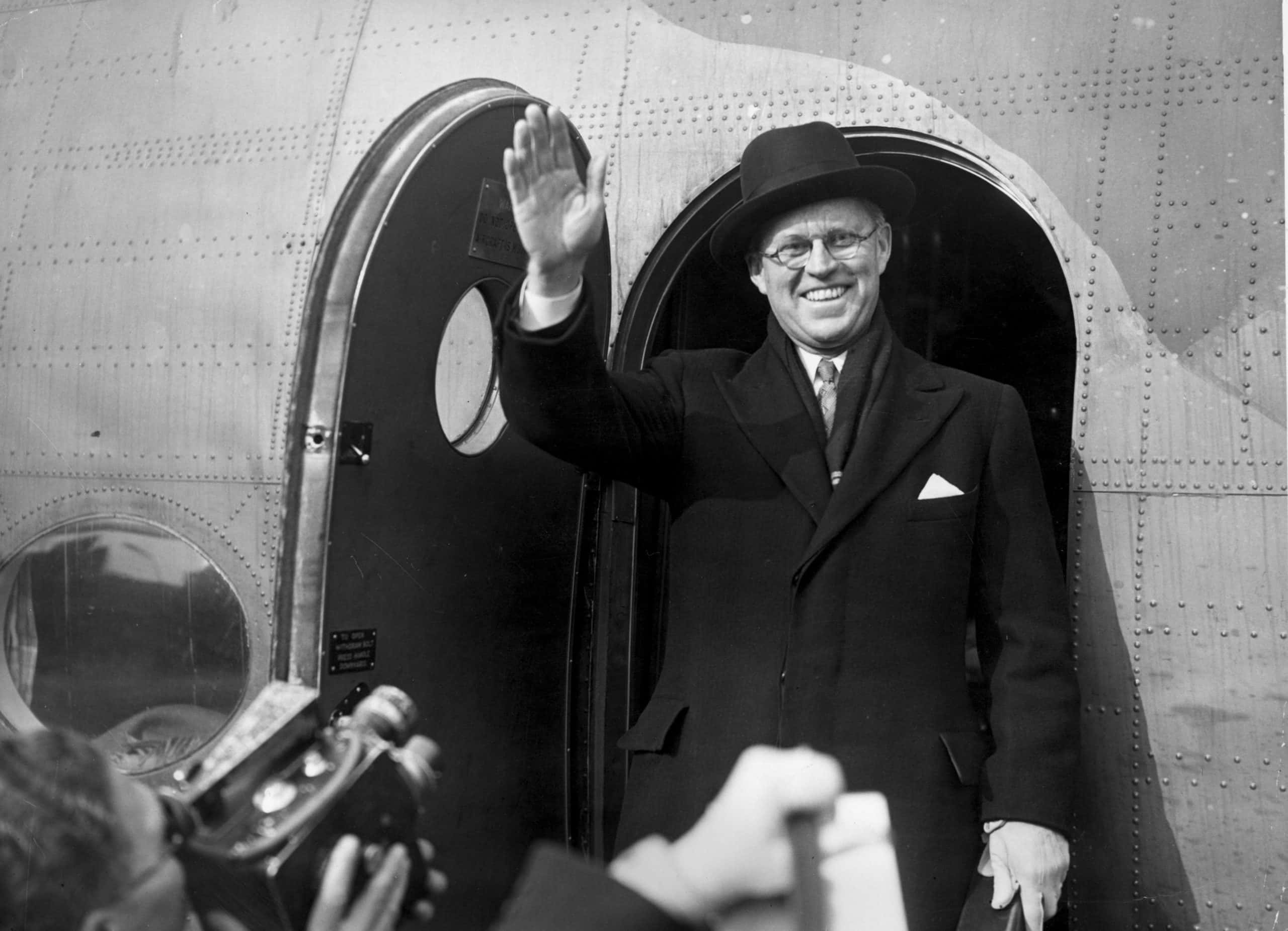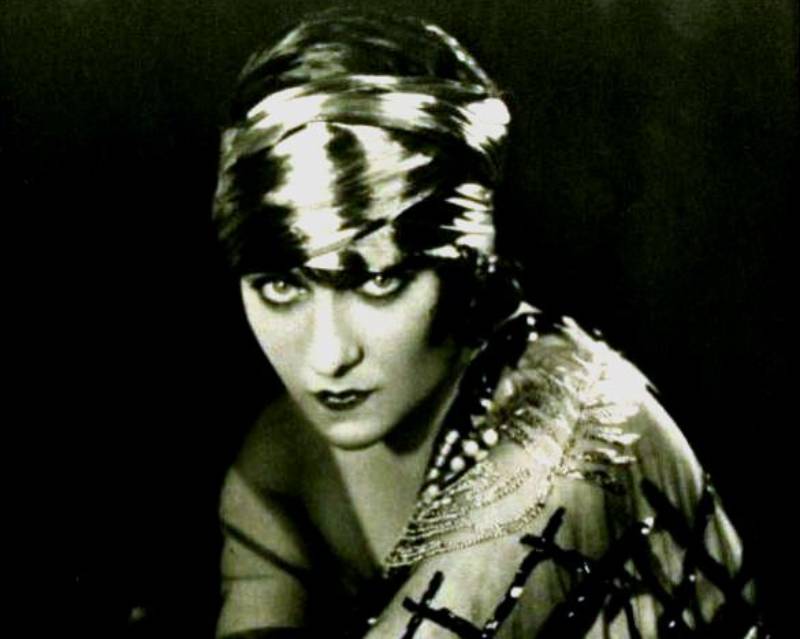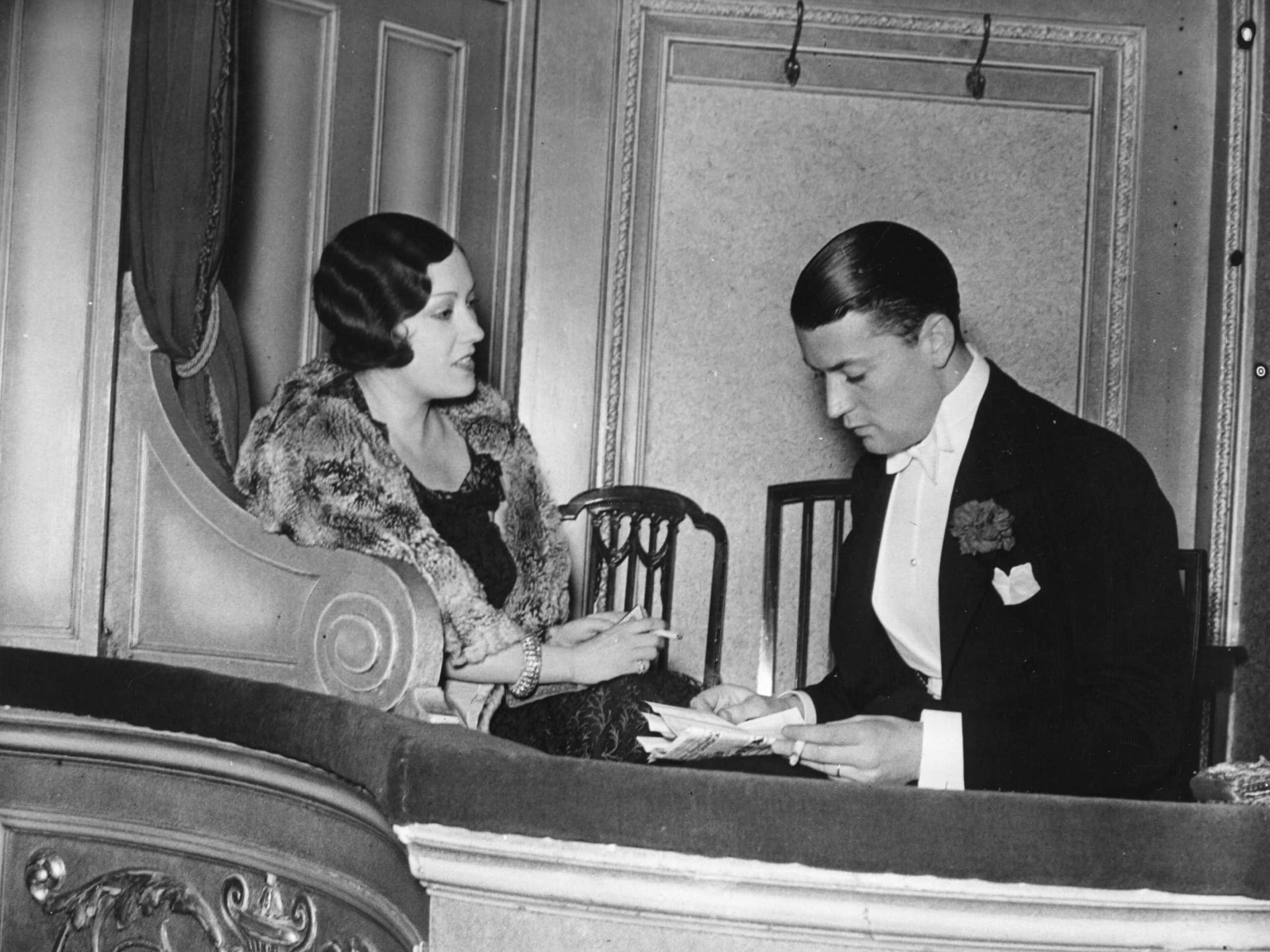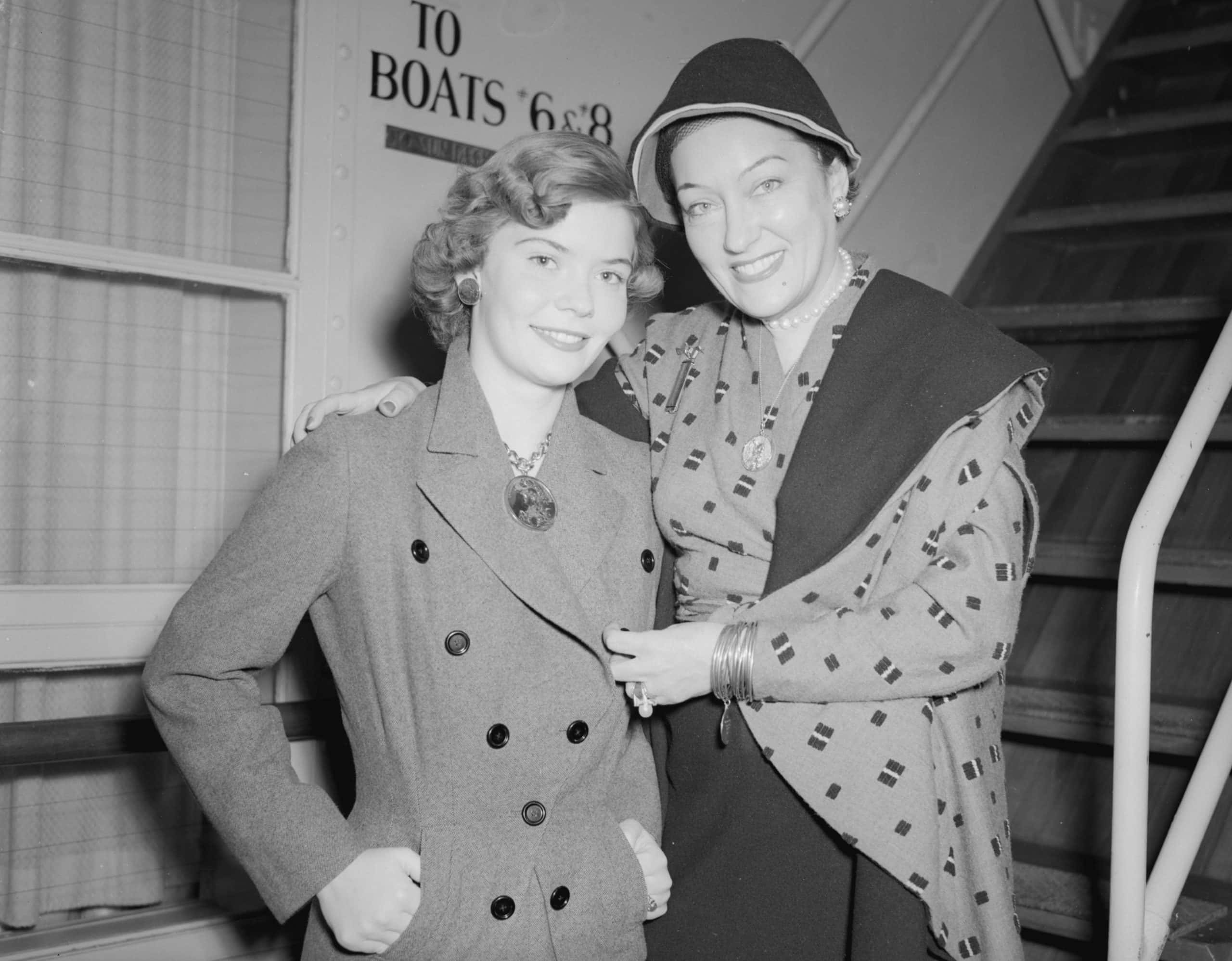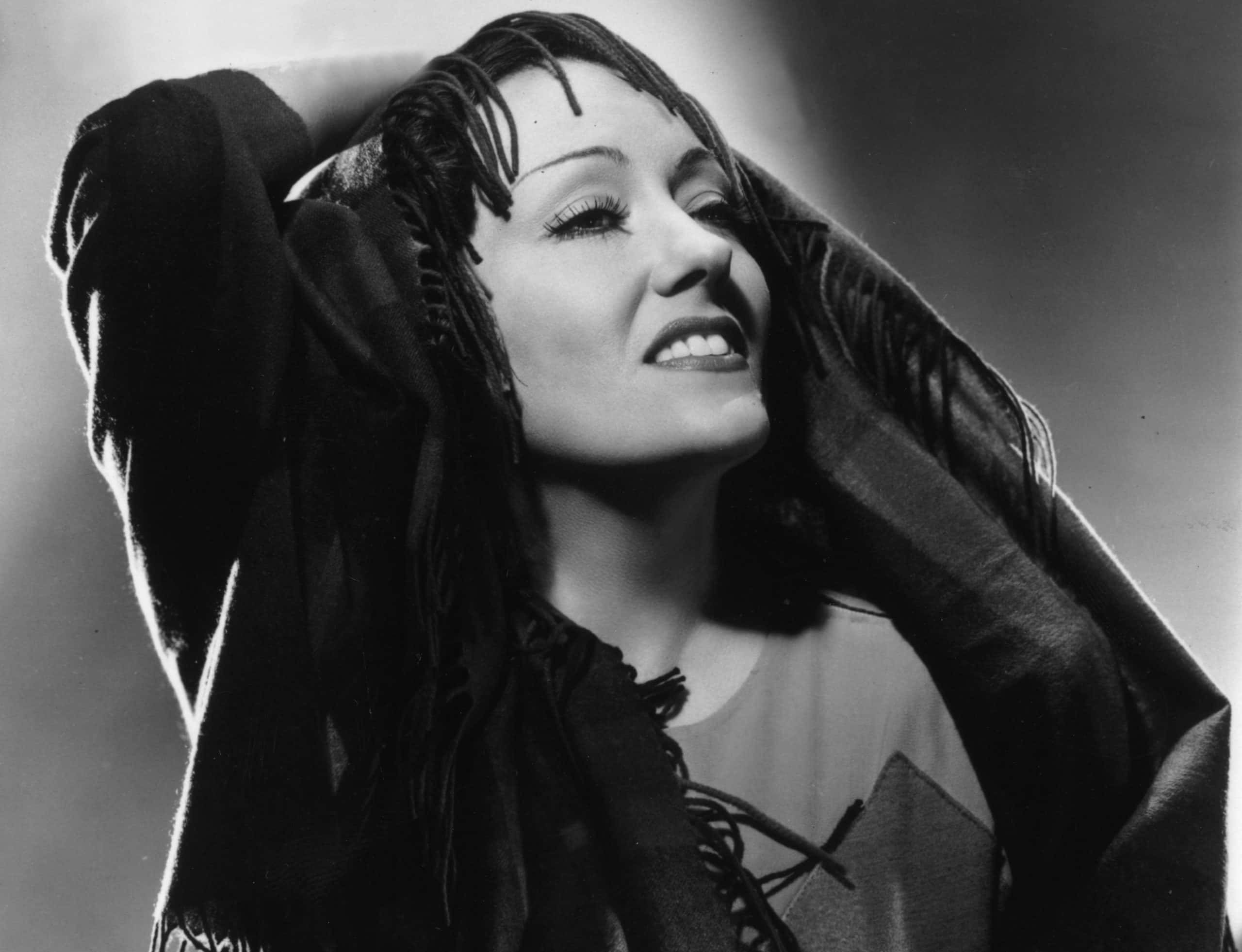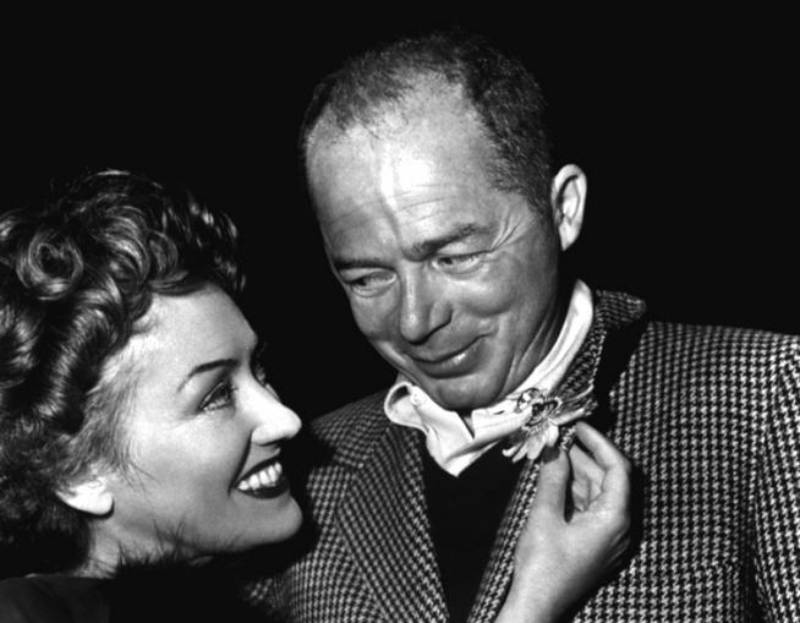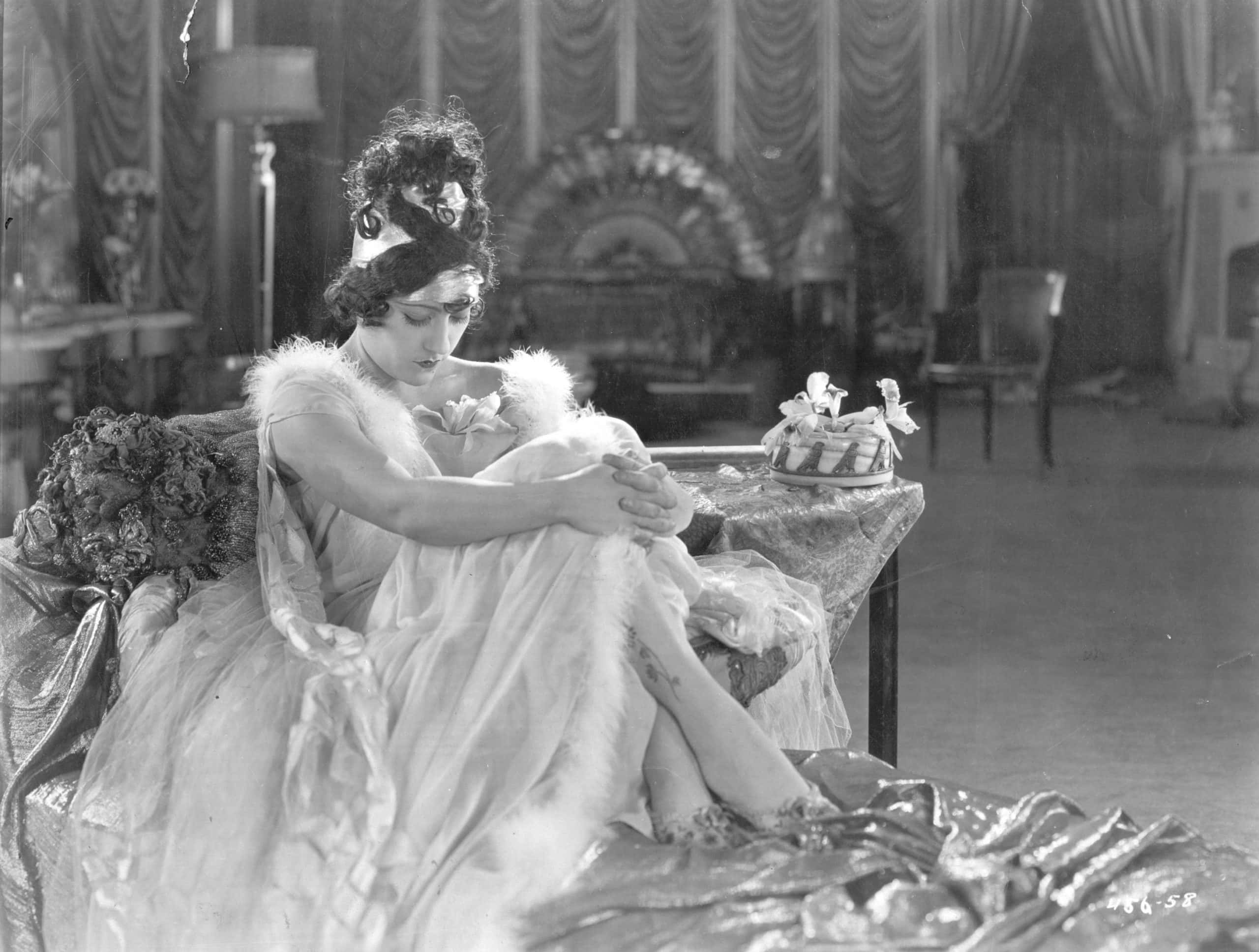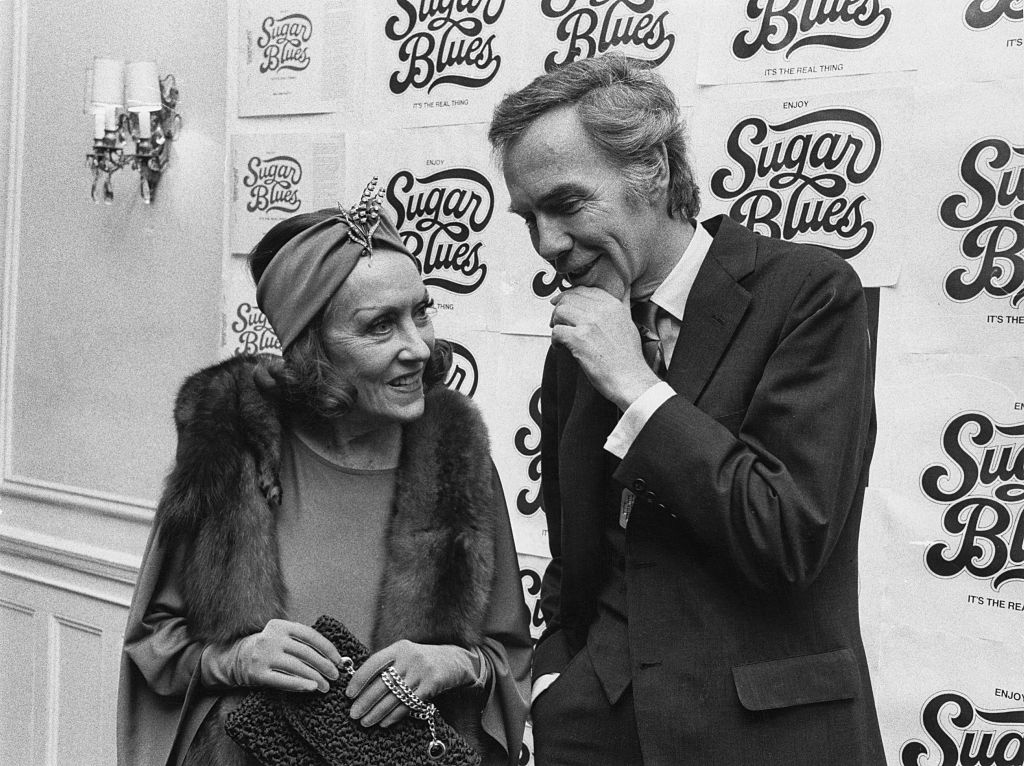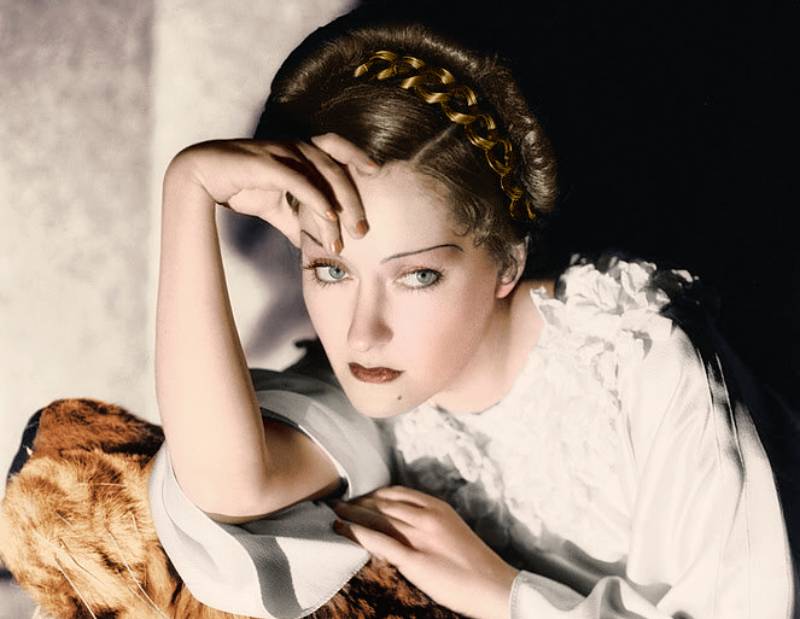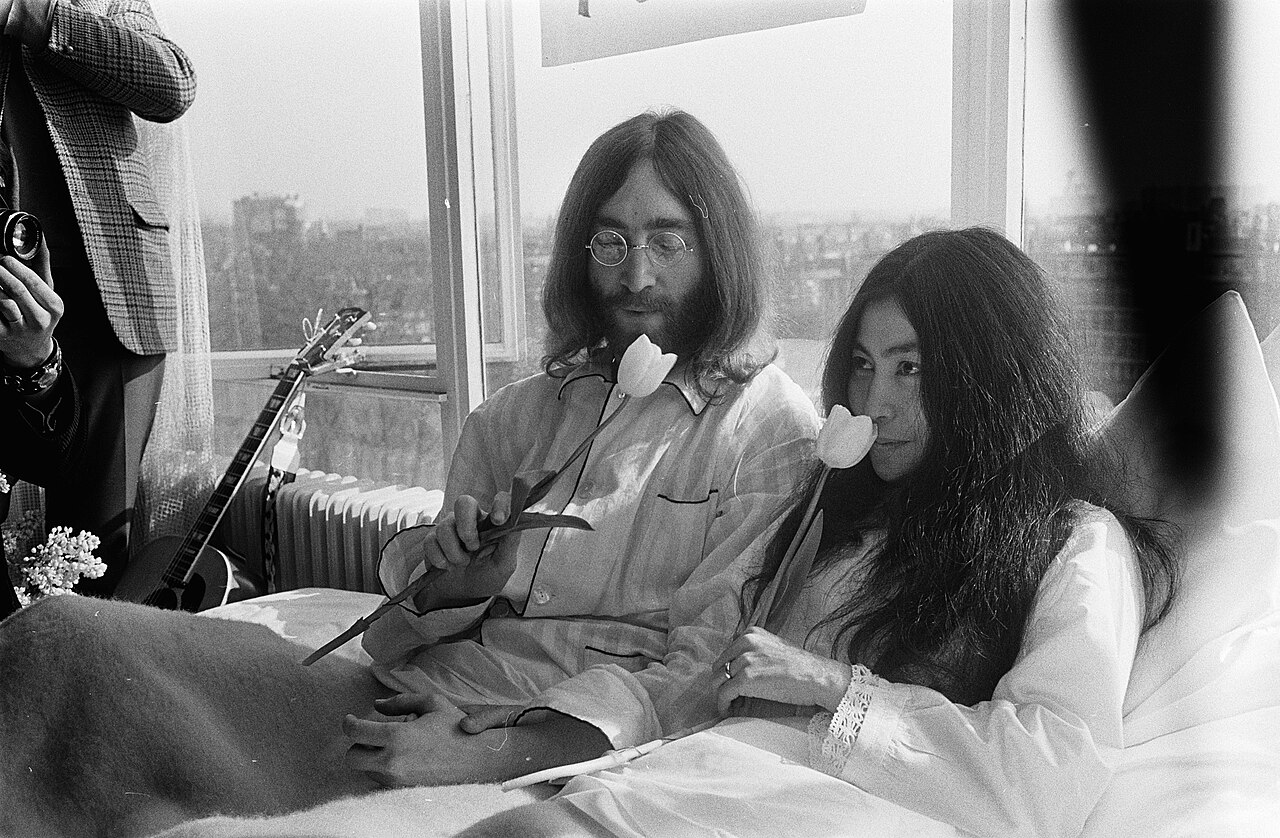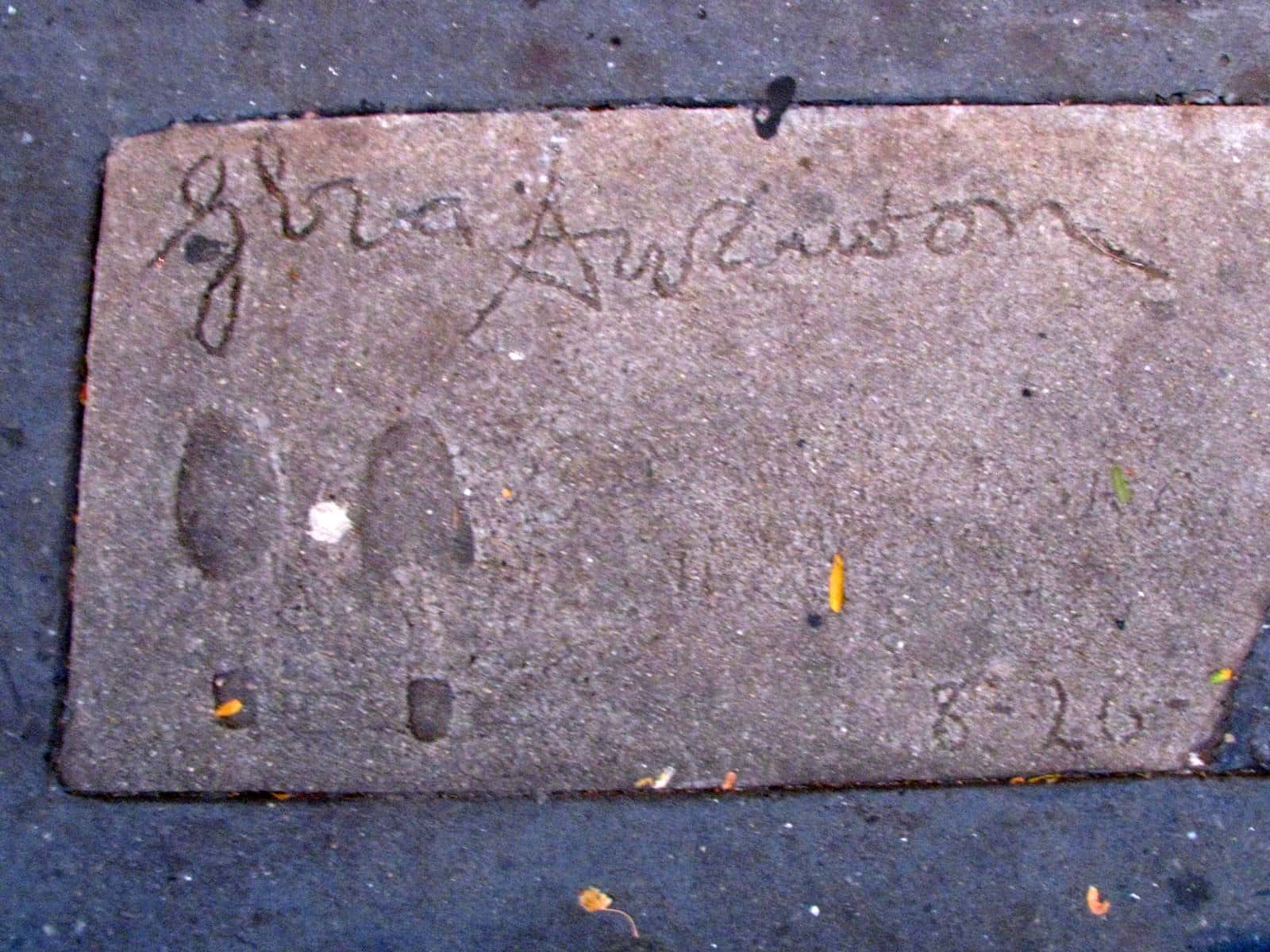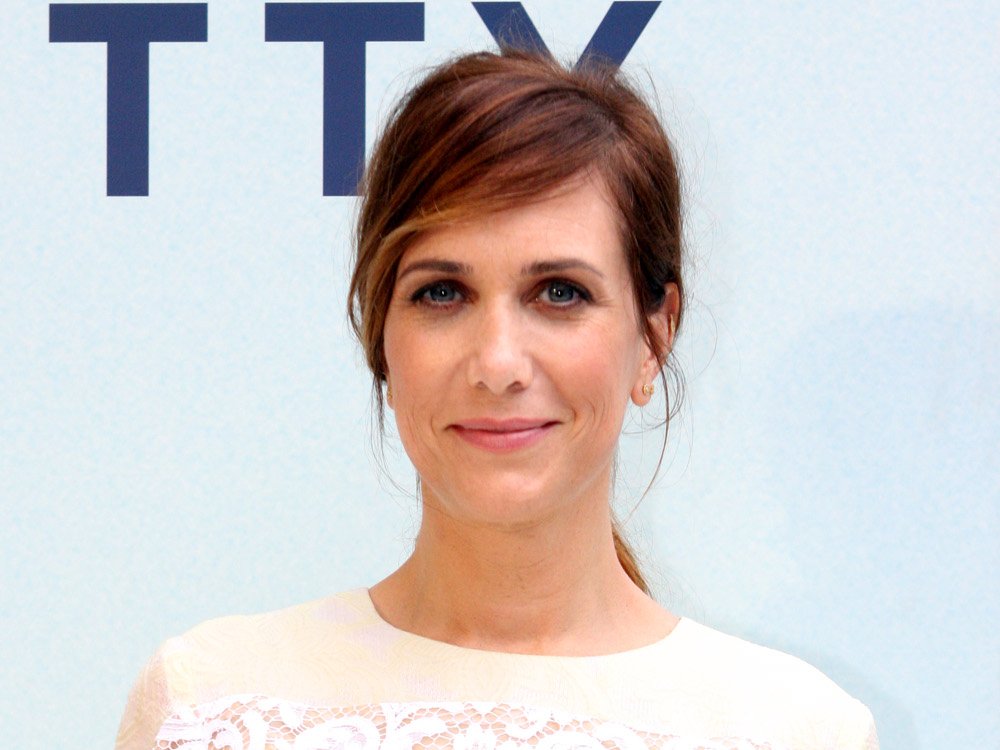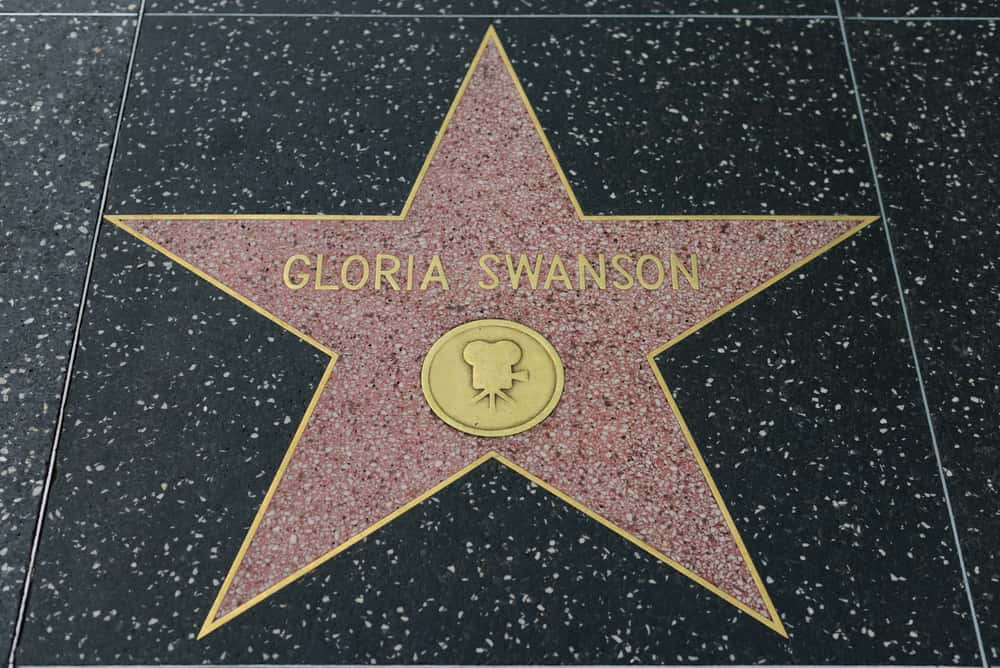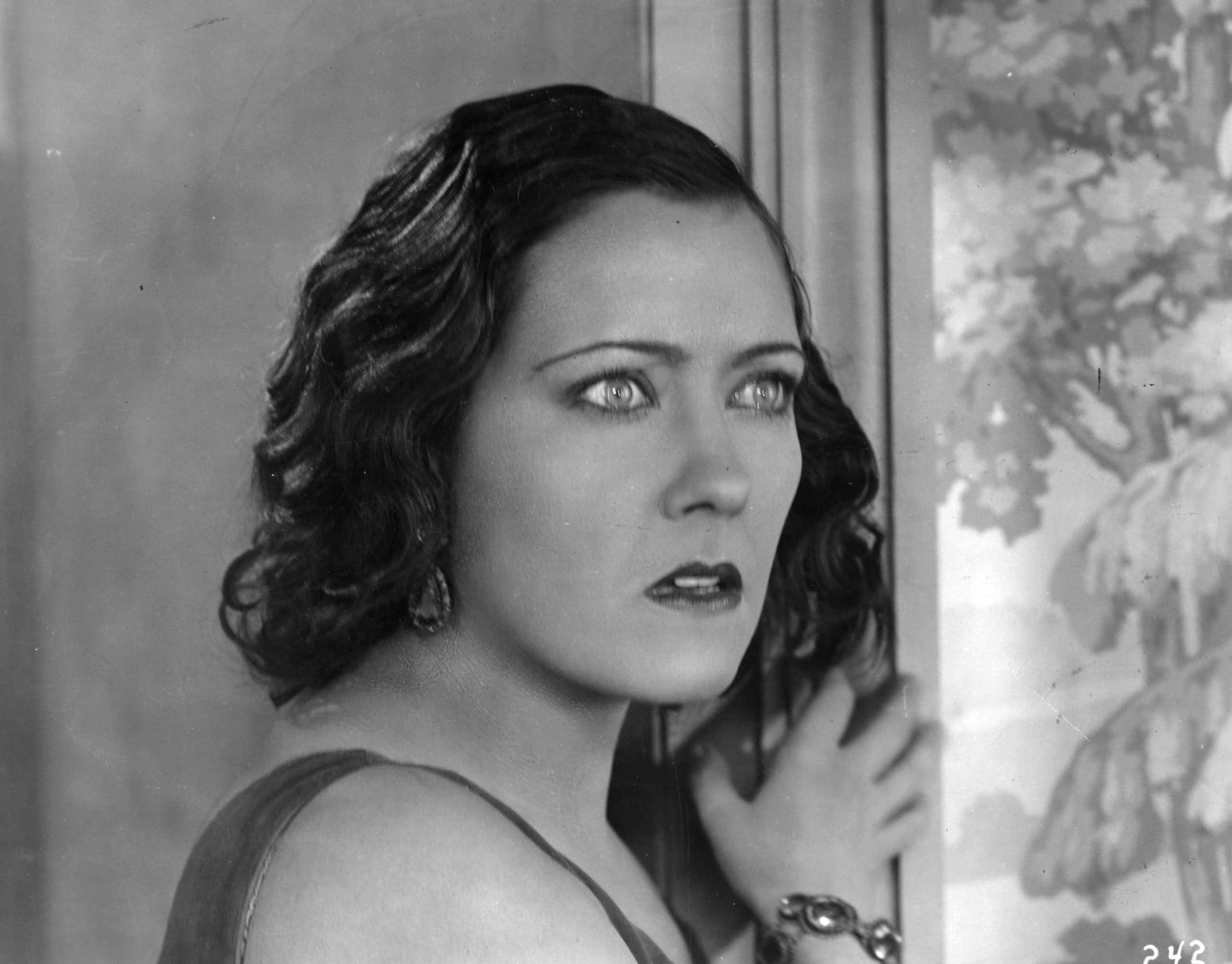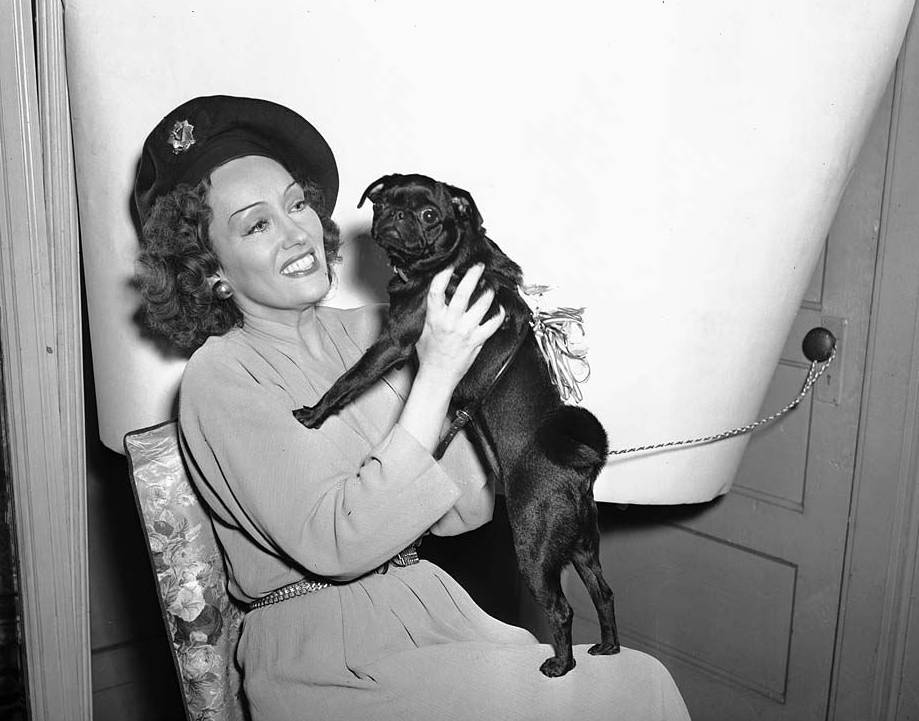As the preferred starlet of famed director Cecil B. DeMille, Gloria Swanson was the undeniable Queen of the Silent Era. Yet for all of the glamorous star’s striking looks and acting chops, her life was full of more drama and tragedy than the films she starred in. Get ready for your close-up with these 60 facts about Gloria Swanson, bewitching empress of early Hollywood.
Gloria Swanson Facts
1. Windy City Heat
Gloria May Josephine Swanson entered the world on March 27, 1899, in Chicago, Illinois. She was the only child of her two parents Joseph Theodore Swanson and Adelaide Swanson (née Klanowski). Only child and an Aries? That’s a troublesome combo in the making. Don’t believe in that kind of thing? Well, just you wait and see...
2. Can’t Take It With You
No one was a bigger star than Gloria Swanson in the final days of the silent film era. Of course, no one was paid as much either—but don’t think that Swanson saved her funds for a rainy day. She spent almost all of the $8 million she earned in the 1920s.
3. I Am Big! It’s the Pictures That Got Small
After disappearing from the screen for most of the 30s and 40s, Swanson returned to Hollywood in an unforgettable way. She starred in iconic film Sunset Boulevard as Norma Desmond, a past-her-prime silent film star determined to make a comeback. It is easily ranked among the best films ever made—on countless critic’s lists top lists, the Library of Congress deemed it culturally significant and the National Film Registry preserved it for future generations.
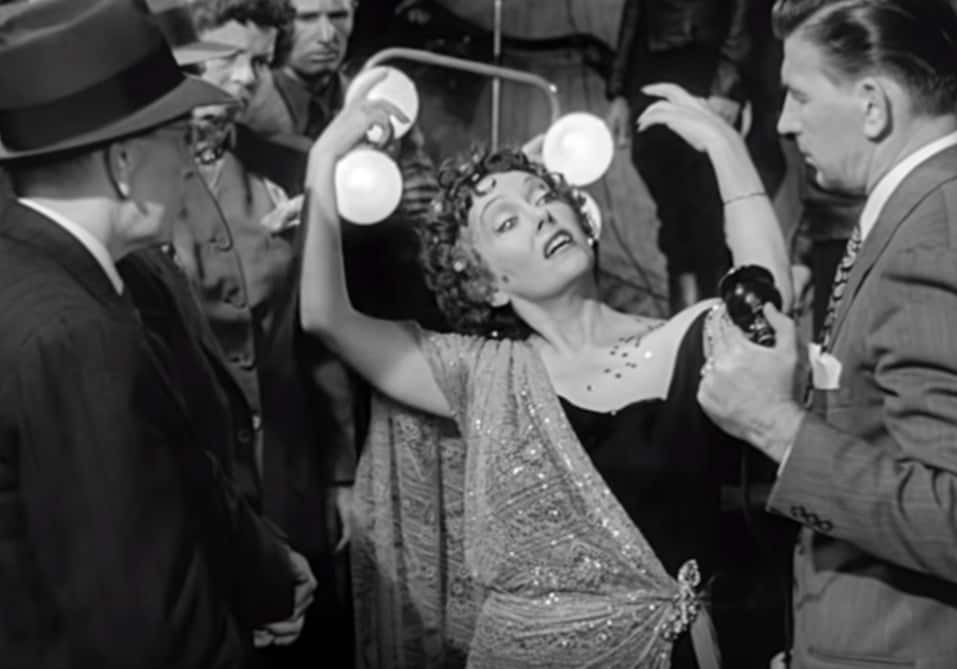 Paramount, Sunset Boulevard (1950)
Paramount, Sunset Boulevard (1950)
4. Stop Me If You’ve Heard This One Before
When she played the unforgettable Norma Desmond, Gloria Swanson had the chance to drop some of the most iconic movie quotes in cinema history. Among them, “I am big! It’s the pictures that got small,” “We didn’t need dialogue, we had faces!” and perhaps the most famous line of all, “Alright, Mr. DeMille, I’m ready for my closeup.”
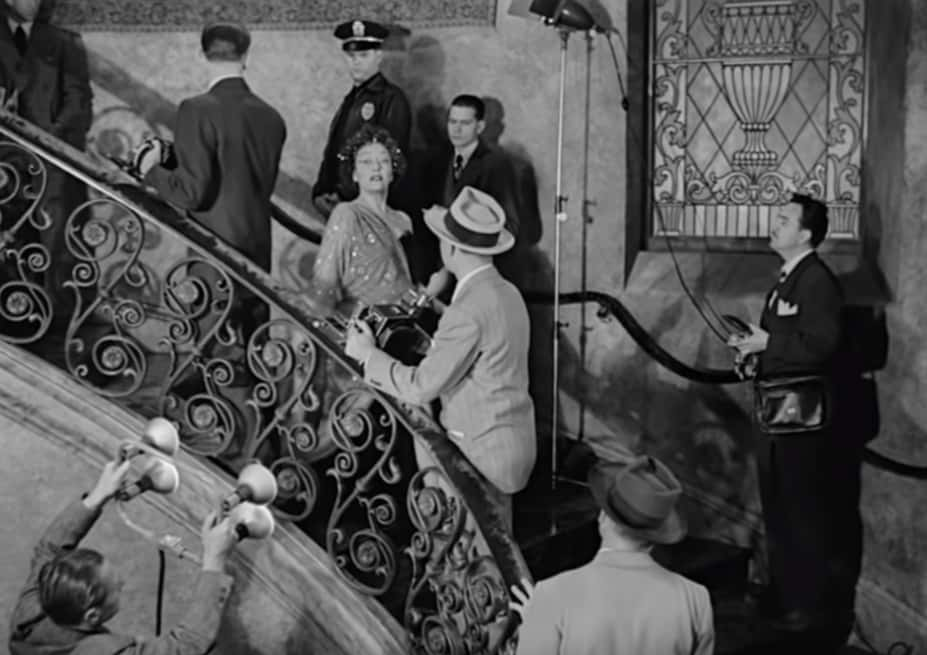 Paramount, Sunset Boulevard (1950)
Paramount, Sunset Boulevard (1950)
5. Groundbreaker
At the first ever Academy Awards in 1928, Gloria Swanson was nominated in the Best Actress category, making her one of three to have the honor of first nominee, alongside Louise Dresser and Janet Gaynor. At that point, nominees were judged on their body of work during the year, so while Swanson was nominated for one film, Sadie Thompson, Gaynor’s nomination comprised three films.
Gaynor went on to win.
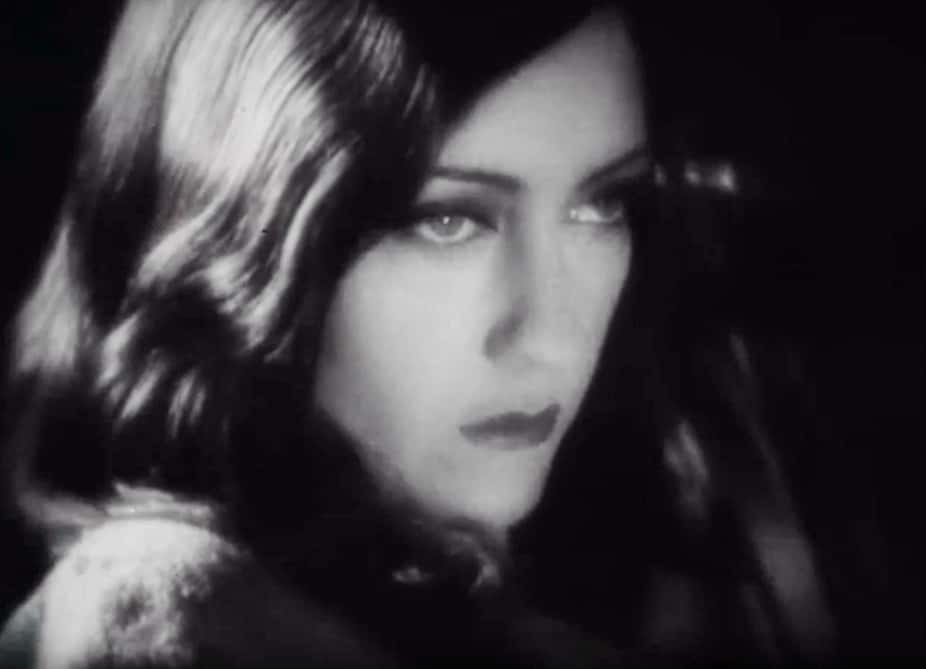 United Artists, Sadie Thompson (1928)
United Artists, Sadie Thompson (1928)
6. In Good Company
In 1914, a young Gloria Swanson was visiting Chicago-based film studio Essanay with her aunt when a talent scout spotted her. She was asked to come back and work as an extra sometime. After a few months as an extra, Swanson dropped out of high school to work full time. Another famous Essanay alumni? Well, none other than Charlie Chaplin.
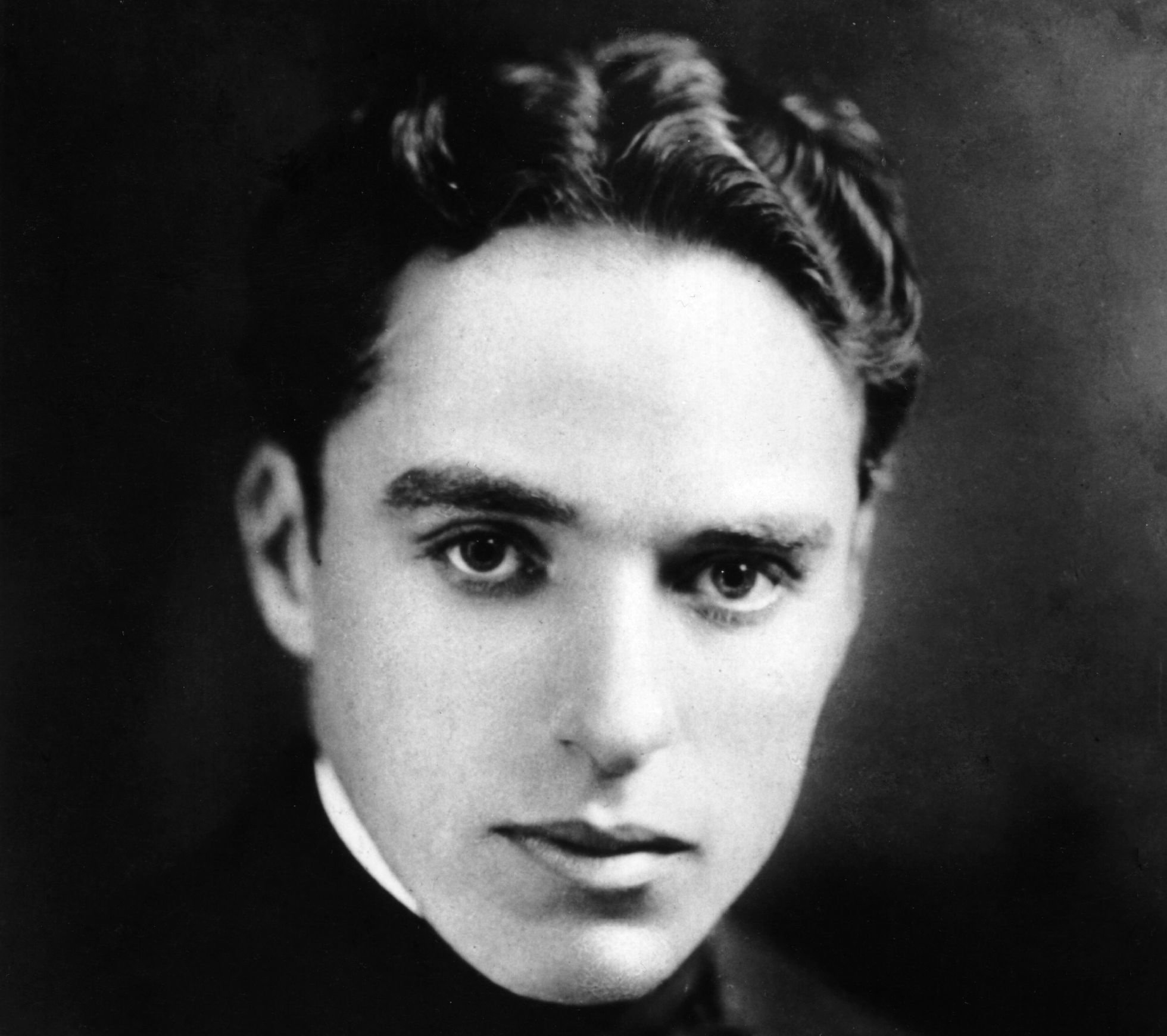 Unknown Author, Wikimedia Commons
Unknown Author, Wikimedia Commons
7. Can’t Help a Man Who Can’t Help Himself
After a string of failed marriages ruined by extramarital affairs, Swanson was determined to keep one of her relationships on the straight and narrow—but sadly, this time she was faced with a problem even she couldn’t solve. Swanson’s fifth husband George William Daley was an alcoholic, and after she and her daughter found him passed out drunk, they left him some pamphlets for Alcoholics Anonymous.
His reaction was utterly devastating: He walked out on them the next day after a year together.
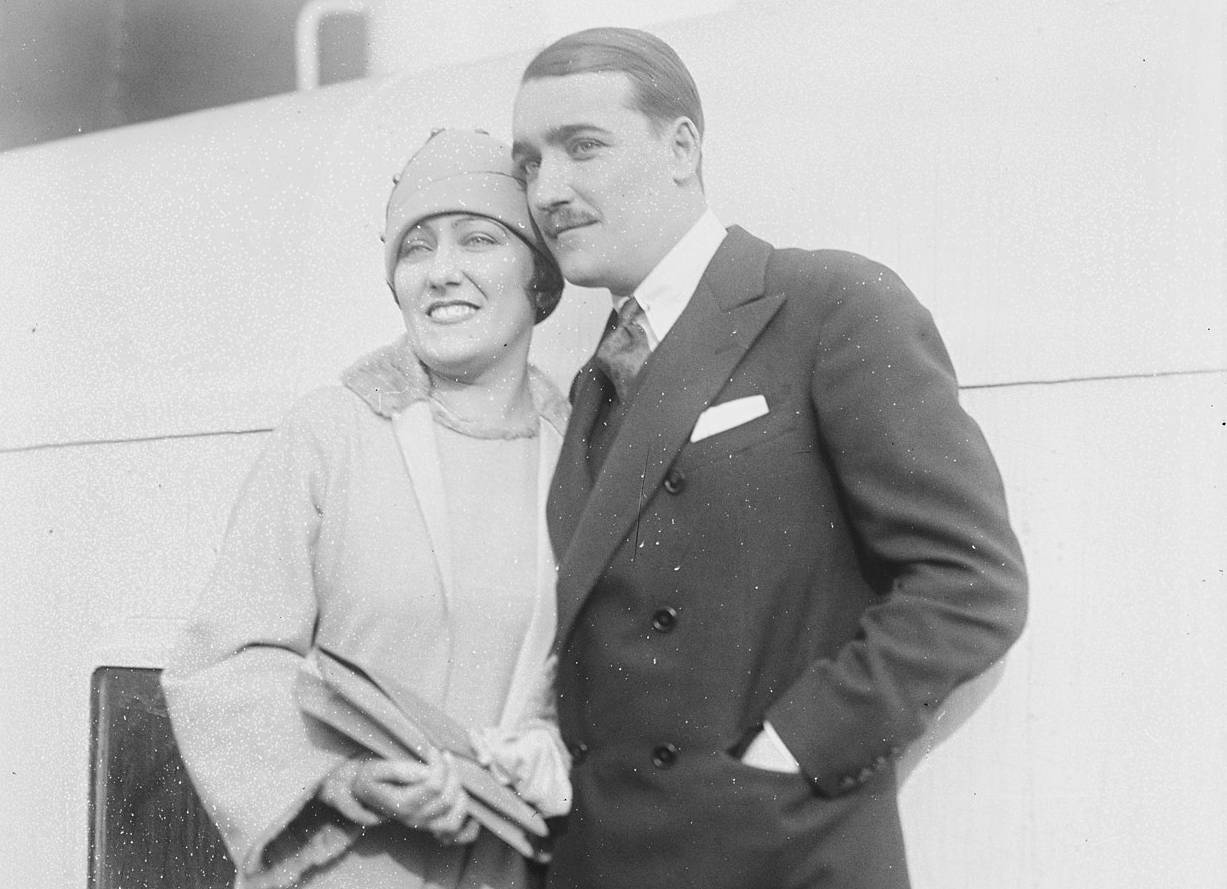 Bain News Service, Wikimedia Commons
Bain News Service, Wikimedia Commons
8. She’s Ready for Her Close-Up
In her early years in Hollywood, Swanson may have been known for her collaborations with Bobby Vernon, but her most iconic creative partnership was yet to come. When she signed with Paramount Pictures in 1919, she began working with director Cecil B. DeMille—he is now credited with turning little Gloria Swanson into a full-blown star.
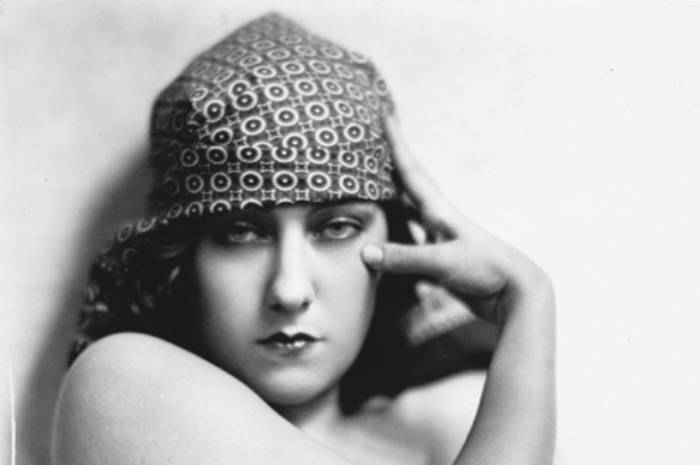 Nickolas Muray (1892-1965), Wikimedia Commons
Nickolas Muray (1892-1965), Wikimedia Commons
9. Let’s Get to Work
Between 1919 and 1921, Swanson and DeMille made a total of six films together, with him directing and her playing the romantic lead. Their first collaboration together, Don’t Change Your Husband, was Swanson’s first big hit film, setting the stage for the films that followed.
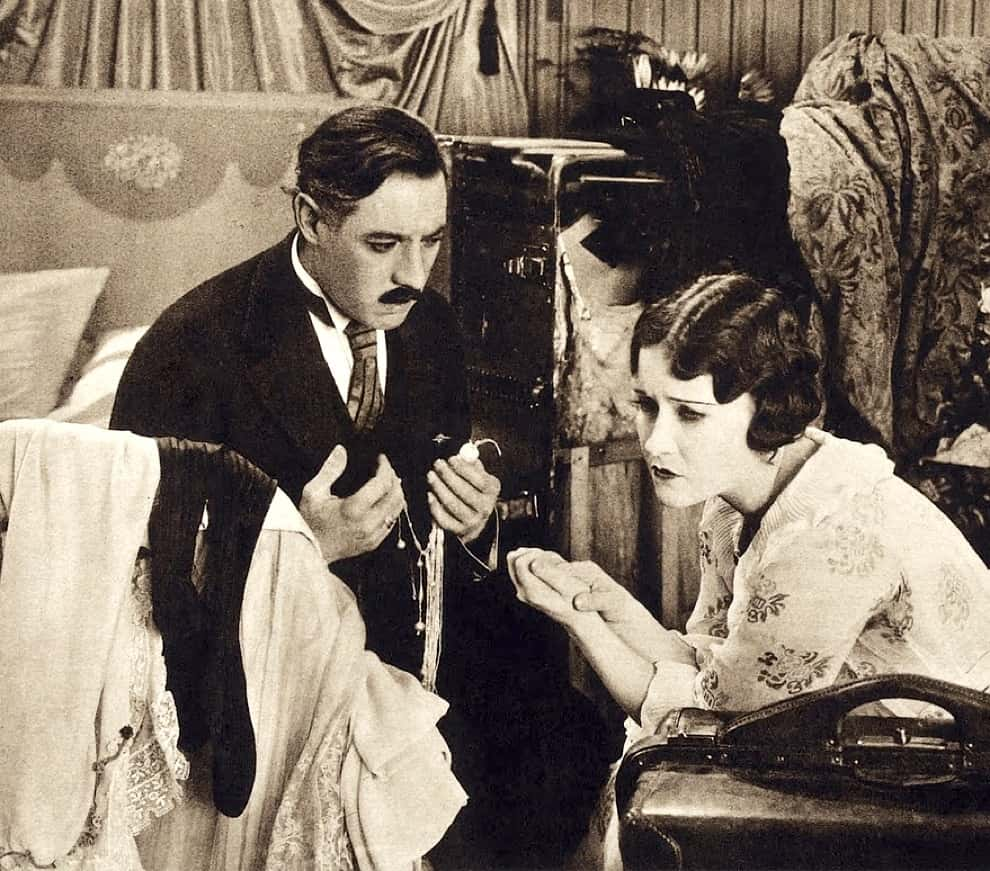 Artcraft Pictures, Wikimedia Commons
Artcraft Pictures, Wikimedia Commons

History's most fascinating stories and darkest secrets, delivered to your inbox daily.
10. Leader of the Pack
One scene in DeMille’s 1919 film Male and Female required Swanson, whose character is shipwrecked with a small group on a deserted island, to act alongside real lions. At first, DeMille had wanted to cut the scene entirely, knowing how dangerous it could be, but Swanson talked him into keeping it and even demanded that she do the scene herself.
However, before filming started, DeMille took some unusual precautions.
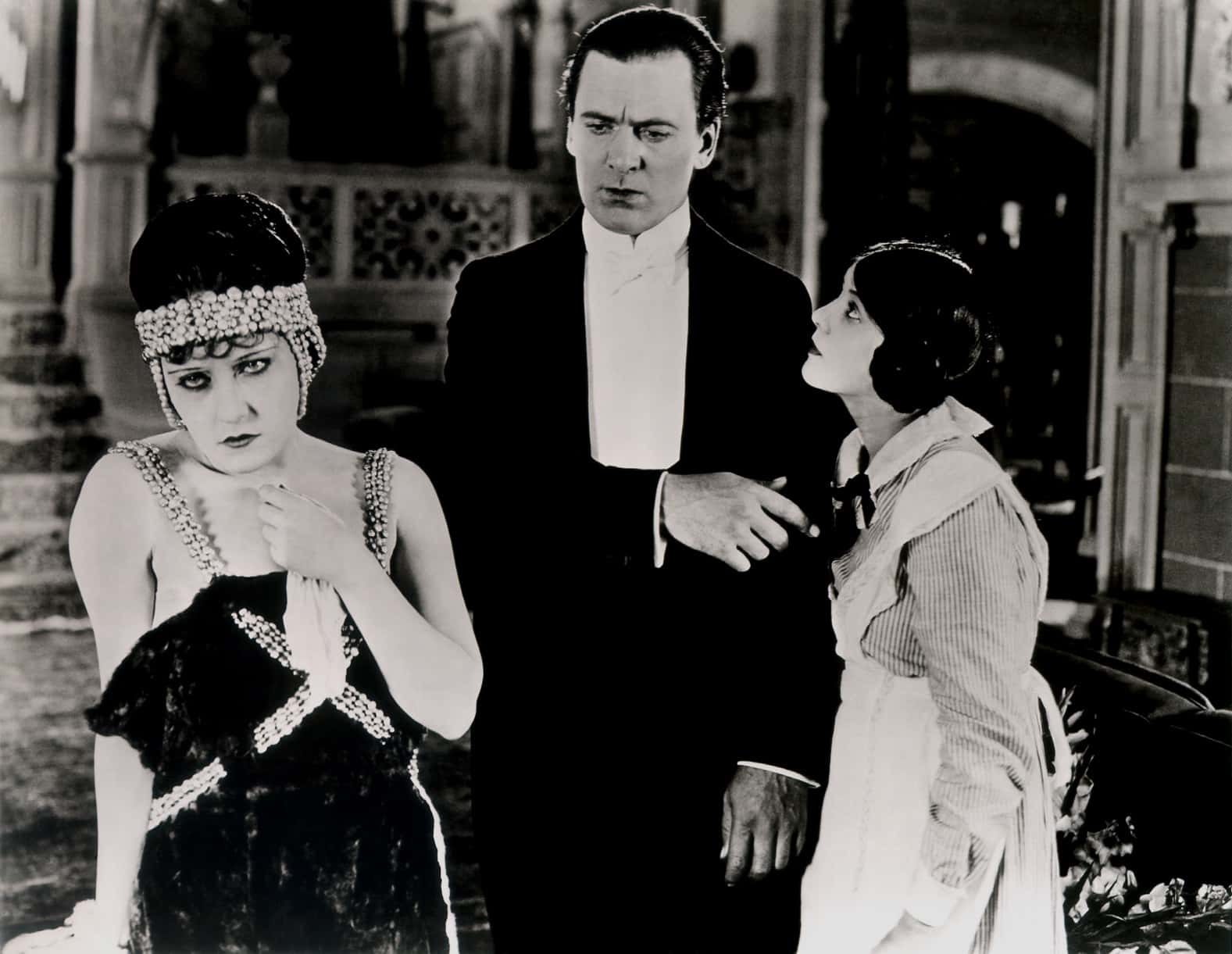 Cecil B. deMille Prod., Wikimedia Commons
Cecil B. deMille Prod., Wikimedia Commons
11. Just Asking!
DeMille enlisted two trainers to keep a close watch on the lions on set, and Swanson’s father was close by in case anything went wrong. But first, DeMille had to ask Swanson an important—and inappropriate—question. He asked her if she was on her period, as the big cats would be able to smell it. She said no, and they were allowed to begin filming.
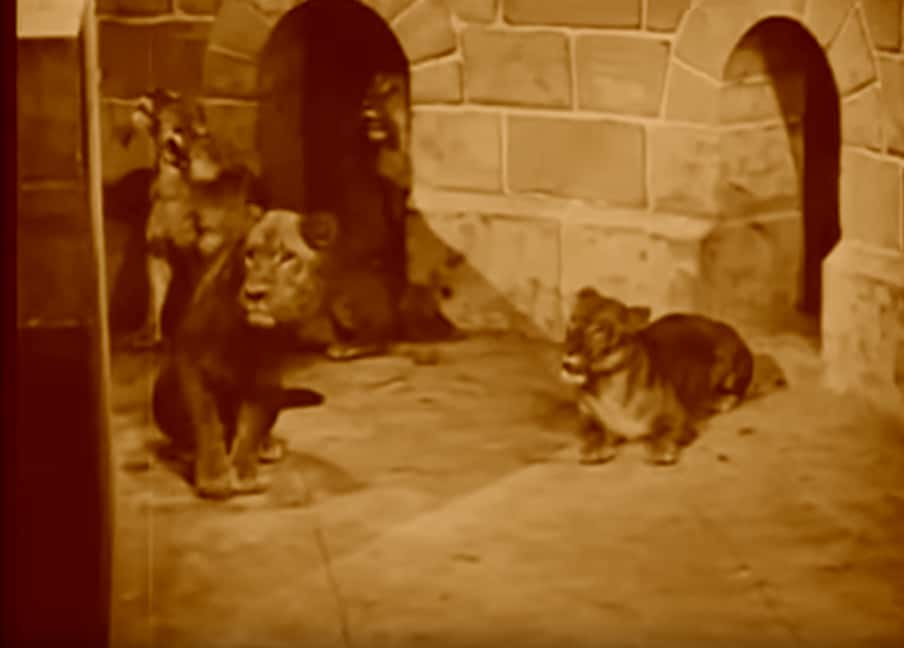 Paramount, Male and Female (1919)
Paramount, Male and Female (1919)
12. Ready for Her Next Close-Up
During her short time working with Cecil B. DeMille, Gloria Swanson became the biggest star in Hollywood. What could she do to stay on top? Why, another prolific collaboration with another hit director, of course. Over the next few years, Swanson appeared in 10 of director Sam Wood’s films.
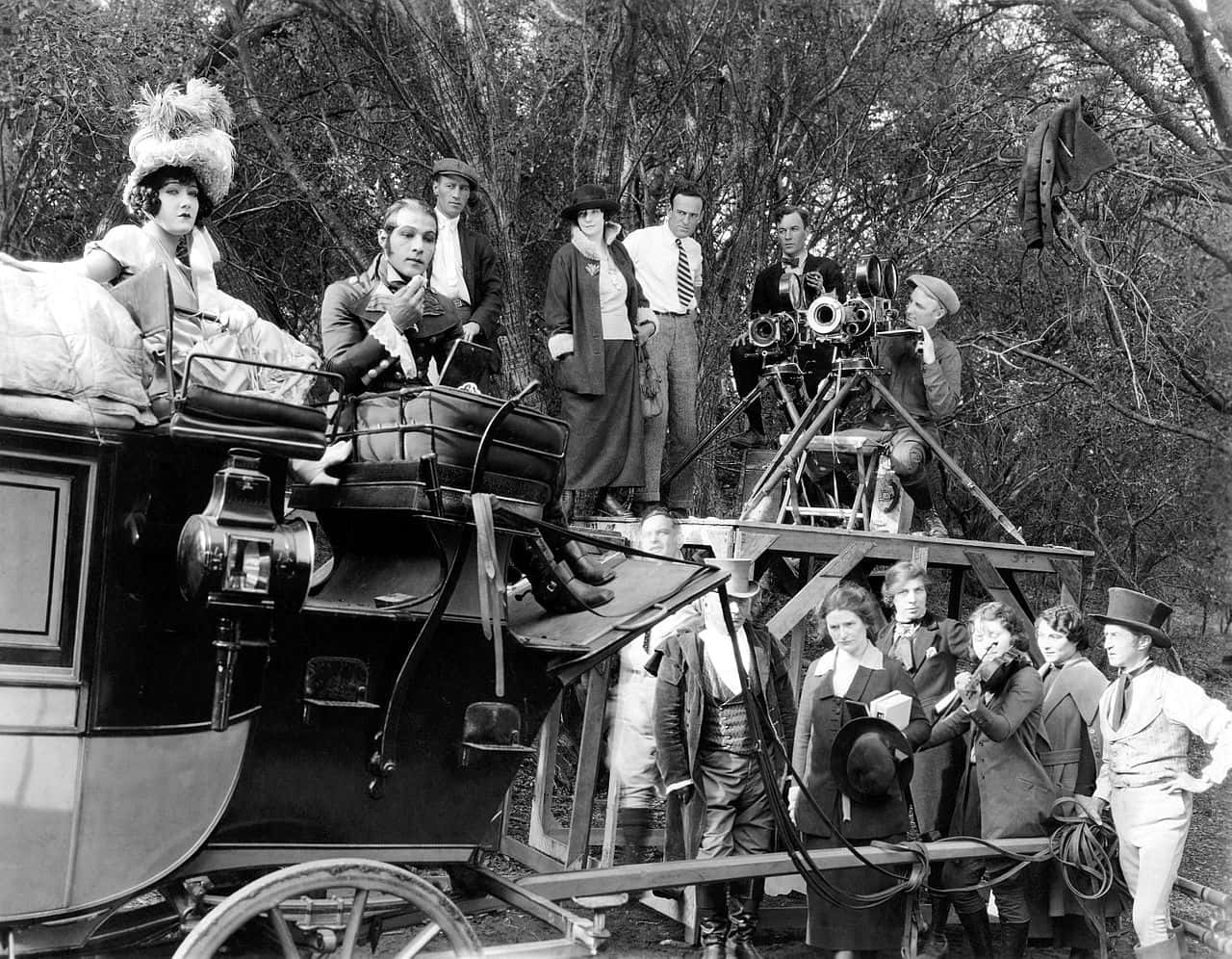 Unknown Author, Wikimedia Commons
Unknown Author, Wikimedia Commons
13. Buried Treasure
In one of these films, Beyond the Rocks, Swanson was cast opposite Hollywood’s biggest heartthrob—Rudolph Valentino. It’s hard to believe that a film pairing two such titans could disappear, but for decades, it was one of cinema's most famous lost films—until 2003, when a print was found hidden away in the Netherland among the possessions of an eccentric collector.
More than eight decades after its release, the film was restored, screened, and finally released on DVD.
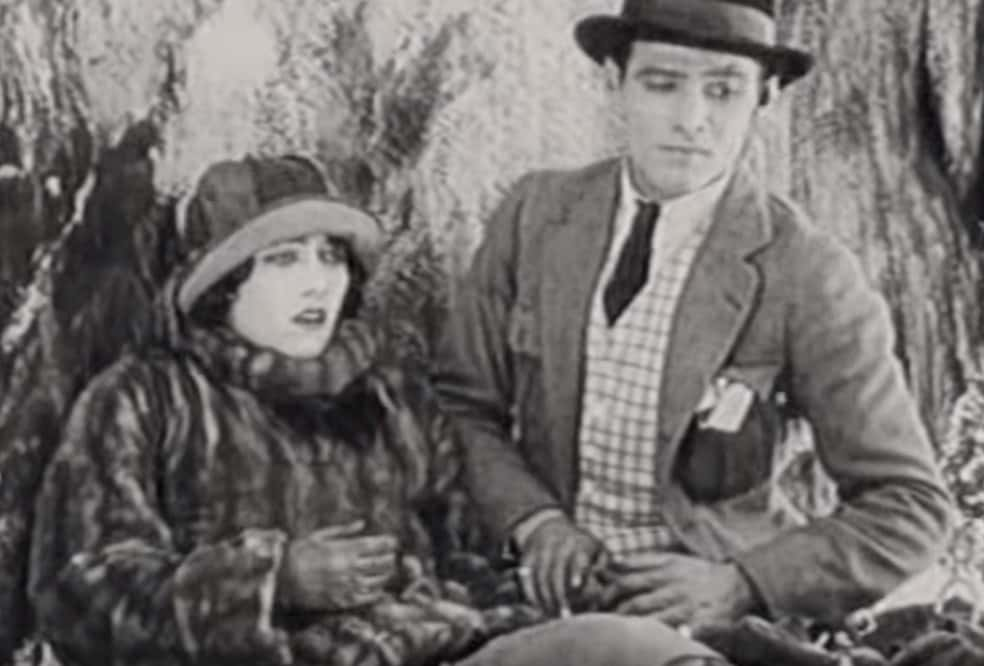 Paramount, Beyond the Rocks (1922)
Paramount, Beyond the Rocks (1922)
14. Lost to Time
Sadly, Beyond the Rocks wasn’t the only one of Swanson’s movies to be lost to time. A whopping 19 other films on her resume are now considered lost.
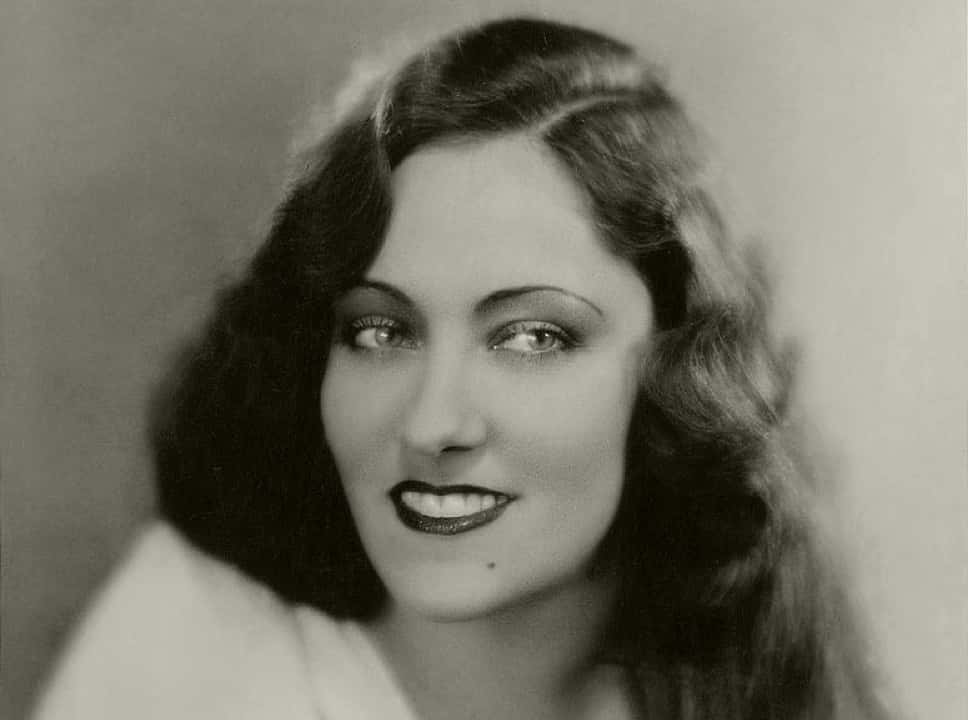 Unknown Author, Wikimedia Commons
Unknown Author, Wikimedia Commons
15. First Marriage Worst Marriage
Swanson became pregnant shortly after marrying her first husband Wallace Beery. It should’ve been a happy time for the young couple, but there was one problem—Beery didn’t want to have children with his wife. Swanson later revealed that Beery went to chilling lengths to avoid having a family. She said that he made her drink a mystery liquid that ended up terminating the pregnancy. Thankfully, the couple would separate and divorce by 1918.
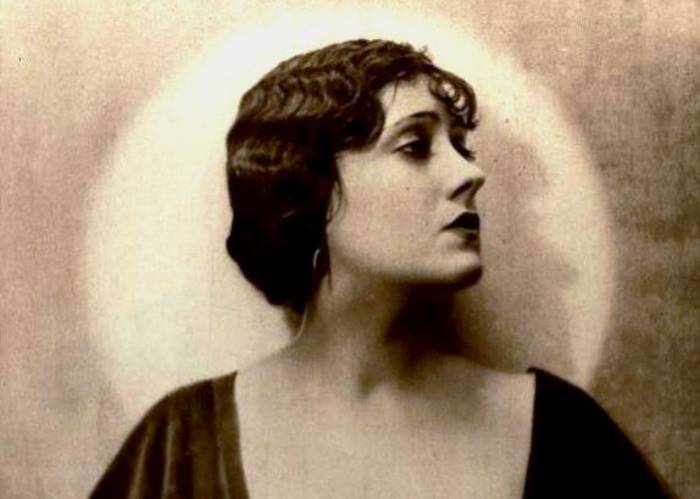 Maurice Goldberg, Wikimedia Commons
Maurice Goldberg, Wikimedia Commons
16. Golden Couple
Swanson’s next marriage was to man-about-town Herbert K. Somborn. Not only was he president of a film company, he was also the owner of Hollywood hotspot and landmark the Brown Derby restaurant. For Swanson, who was still an up-and-coming star on the verge of fame at that point, it was a match made in heaven—but it wouldn’t be for long.
 Famous Players-Lasky Corporation, Wikimedia Commons
Famous Players-Lasky Corporation, Wikimedia Commons
17. Trial of the Century
The six-year marriage between Swanson and Somborn produced a daughter, Gloria Swanson Somborn—but it also produced an utterly scandalous divorce case that rocked Hollywood to its core.
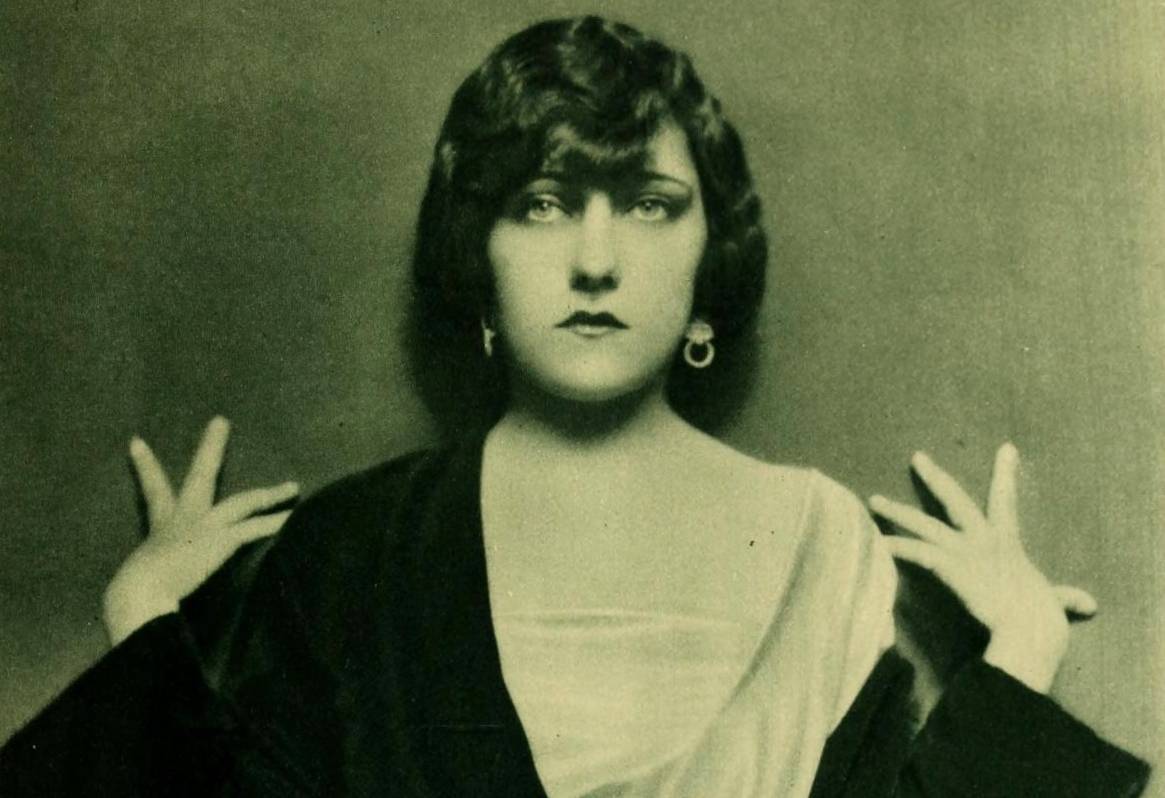 Edward Thayer Monroe, Wikimedia Commons
Edward Thayer Monroe, Wikimedia Commons
18. Lucky 13
During their divorce proceedings, Somborn accused Swanson of adultery—but that wasn’t the worst part. Somborn claimed that not only had Swanson cheated on him, she had done so with 13 different men, many of them famous. They included her frequent collaborator Cecil B. DeMille, the "Latin Lover" Rudolph Valentino, and director and producer Marshall Neilan.
19. Contractually Bound
The salacious details of Swanson’s divorce caused an absolute media frenzy, and Paramount Studios, who held her contract at the time, had to act. They added a morality clause to the star's contract. These types of clauses basically stated that the person had to behave in a way that followed general moral standards, or else. If Swanson misbehaved, she could be let go from Paramount.
In the 20s, especially following the Fatty Arbuckle scandal, clauses like this became more and more common.
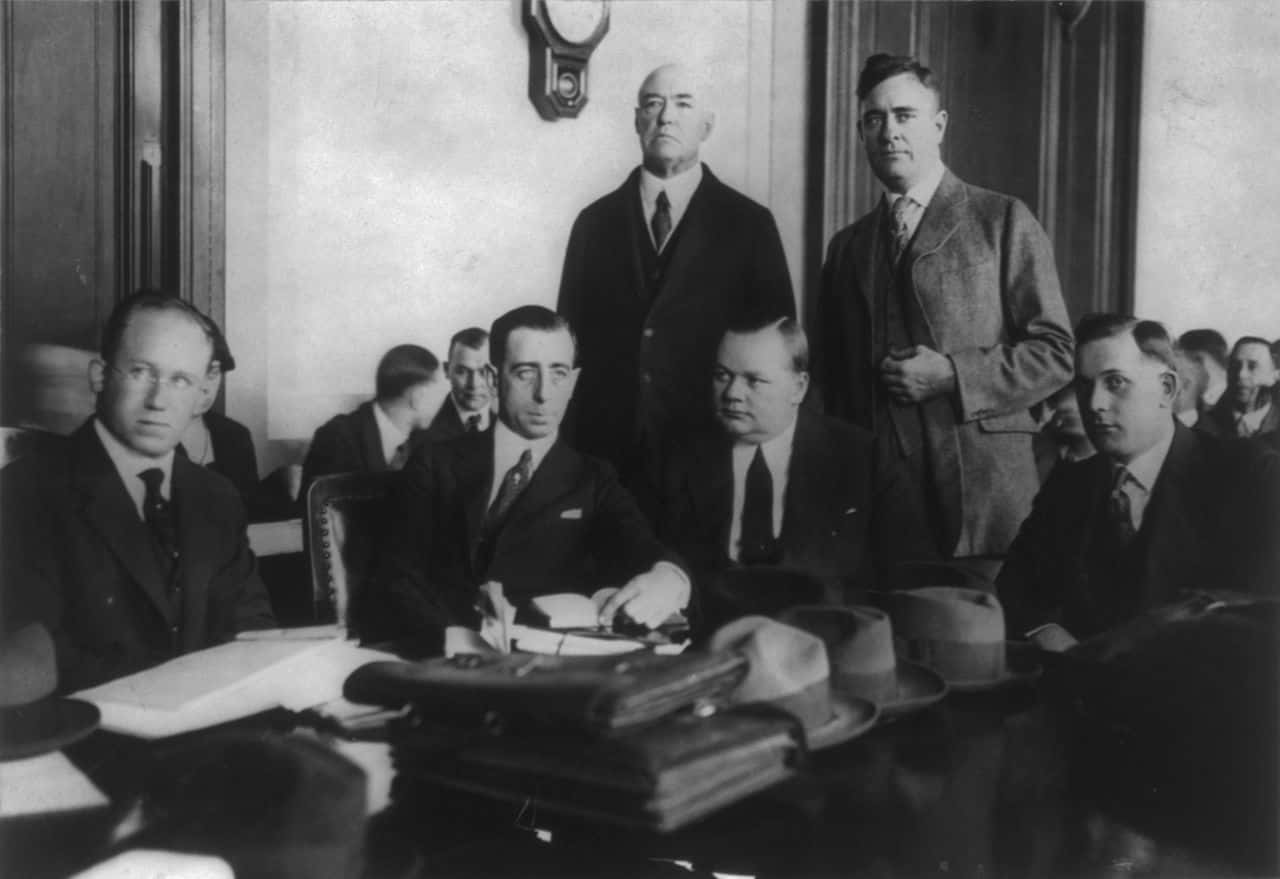 Unknown photographer, Wikimedia Commons
Unknown photographer, Wikimedia Commons
20. Pulling an Angelina
In 1923, in the middle of her long and contentious divorce proceedings, Swanson found a bright spot. The actress adopted a baby boy and named him Joseph Patrick Swanson.
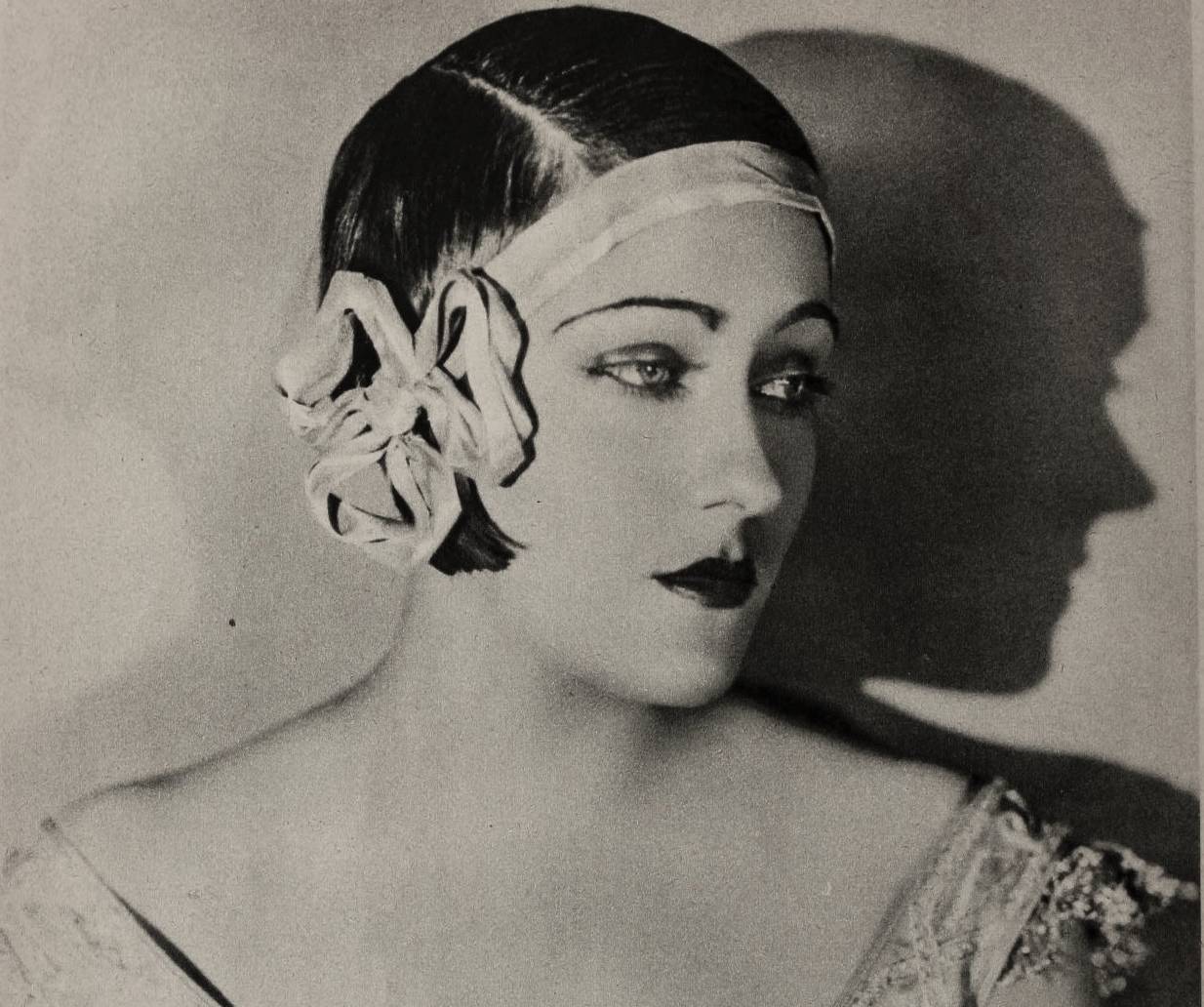 Russell Ball, Wikimedia Commons
Russell Ball, Wikimedia Commons
21. It Girl
At the height of Swanson’s popularity in the mid-20s, she was known for her distinctive and glamorous style. Her eye-catching wardrobe involved haute couture pieces, and lots of beads, jewels, and feathers. Swanson was the quintessential flapper, and fans loved to copy her style, from her heavily kohl-rimmed eyes and Cupid’s bow-painted lips to her love for distinctive headwear and long, beaded necklaces.
22. The Best Way to Get Over Someone…
After her divorce, Swanson threw herself into her work. It was probably a pretty good way to keep out of trouble—at least at first. While filming Madame Sans-Gêne in France, Swanson hired a translator to help her cope in the new country, and it didn’t take long for the two to fall in love. But this translator wasn’t just any regular guy—he was Henri, Marquis de la Falaise, a French nobleman.
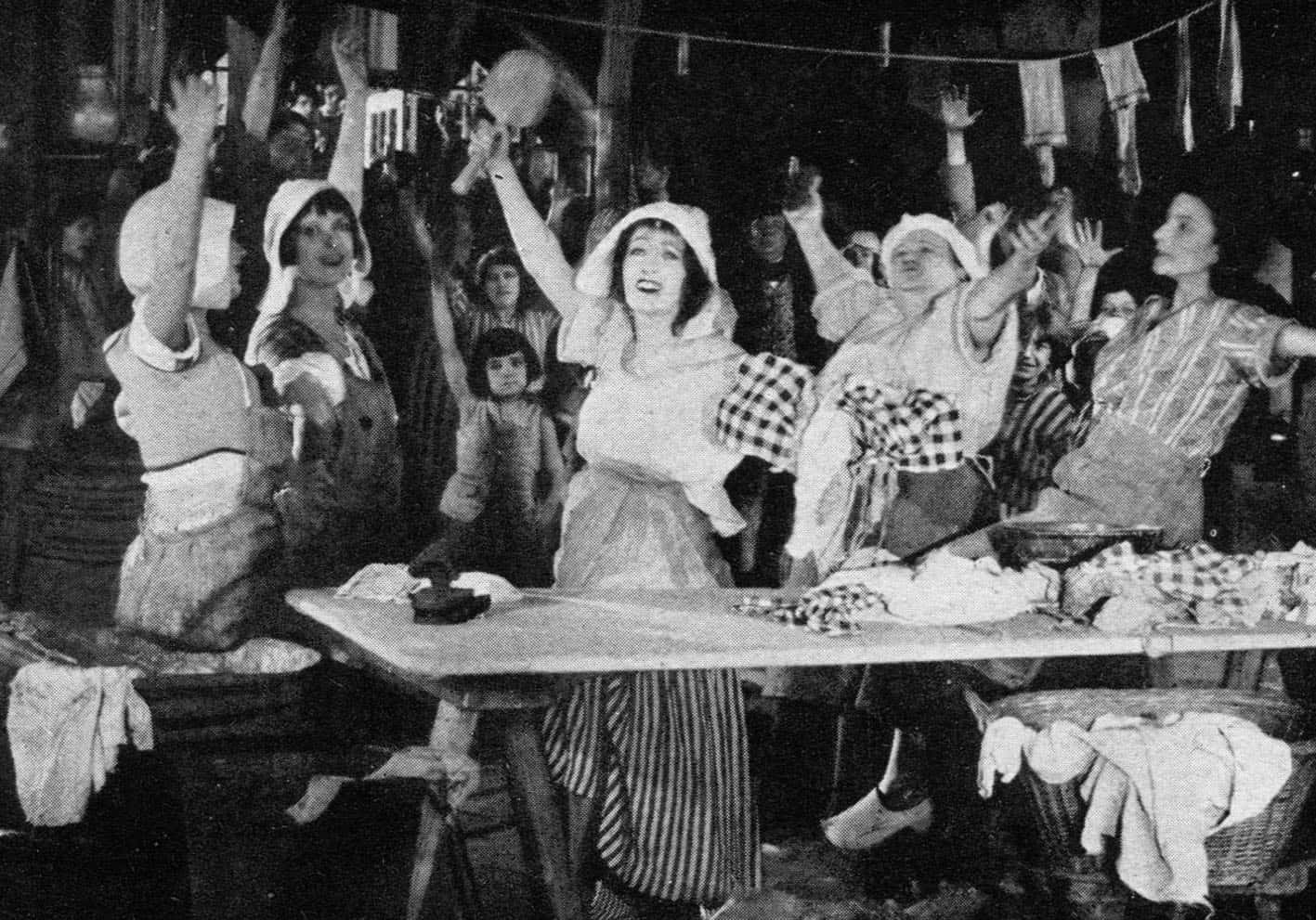 Unknown Author, Wikimedia Commons
Unknown Author, Wikimedia Commons
23. Sorry Grace Kelly, Swanson Did It First
The impulsive pair of Henri, Marquis de la Falaise, and Swanson wed while they were still in France, which meant that when Swanson returned stateside, she came back as a noblewoman—the Marquise. This step up the social hierarchy only served to add another layer of glamor to an already glamorous life. But that wasn’t the only thing she brought back to the US…
24. (Don’t) Do the Math
When she came back to the United States, Swanson found out that she was pregnant, but there was one problem—her due date was just seven months after her wedding, meaning that the baby had been conceived out of wedlock. Swanson still had a morality clause on her contract. As she predicted the damage that her pregnancy would do to her career, she made a heartbreaking decision. Swanson terminated the pregnancy.
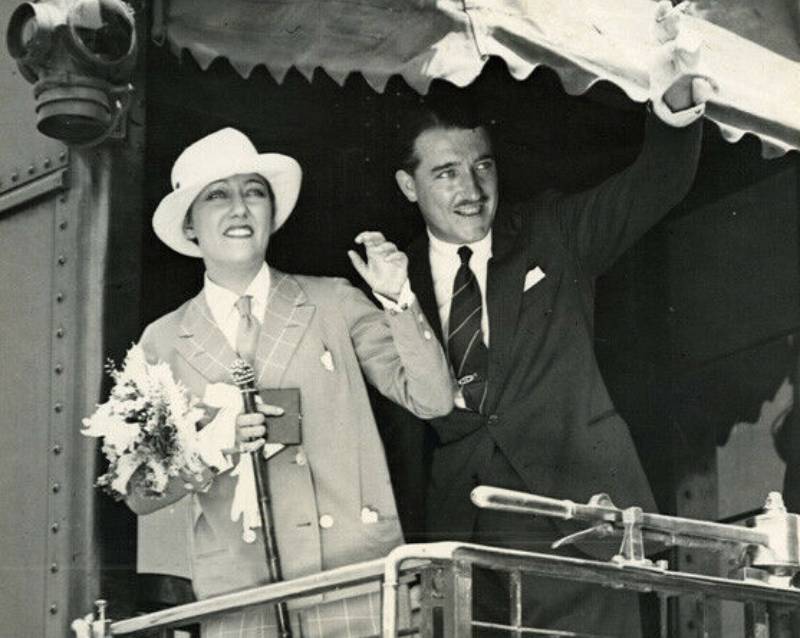 Pacific and Atlantic Photos, Wikimedia Commons
Pacific and Atlantic Photos, Wikimedia Commons
25. Striking Out on Her Own
The fledgling United Artists studio was created by Charlie Chaplin and Mary Pickford, among others, to better control their careers in 1919. Ownership had been shuffled around since then, but when Swanson wished to escape from under the thumbs of the major studios, she knew just where to go. Even though Paramount was offering her a $1 million per year contract, she shocked all of Hollywood by turning them down and joining United in 1927.
Swanson knew she’d be one of their biggest stars—and she had even bigger plans.
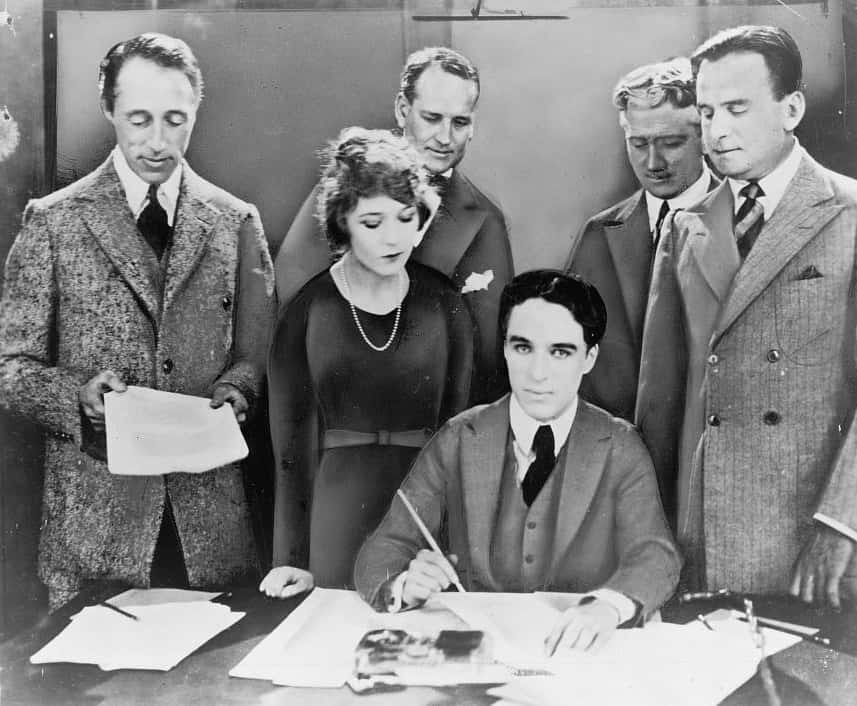 Sun Newspaper Photograph Collection, Wikimedia Commons
Sun Newspaper Photograph Collection, Wikimedia Commons
26. First One, Worst One
Swanson’s first shot at making a hit on her own terms was with the film The Love of Sunya—but the production was a total disaster. Swanson was both producer and star, but she wasn’t used to being in charge. She chose to film it in New York City, and quickly ran into problems with staffing and budget, later calling it an “agonizing ordeal.”
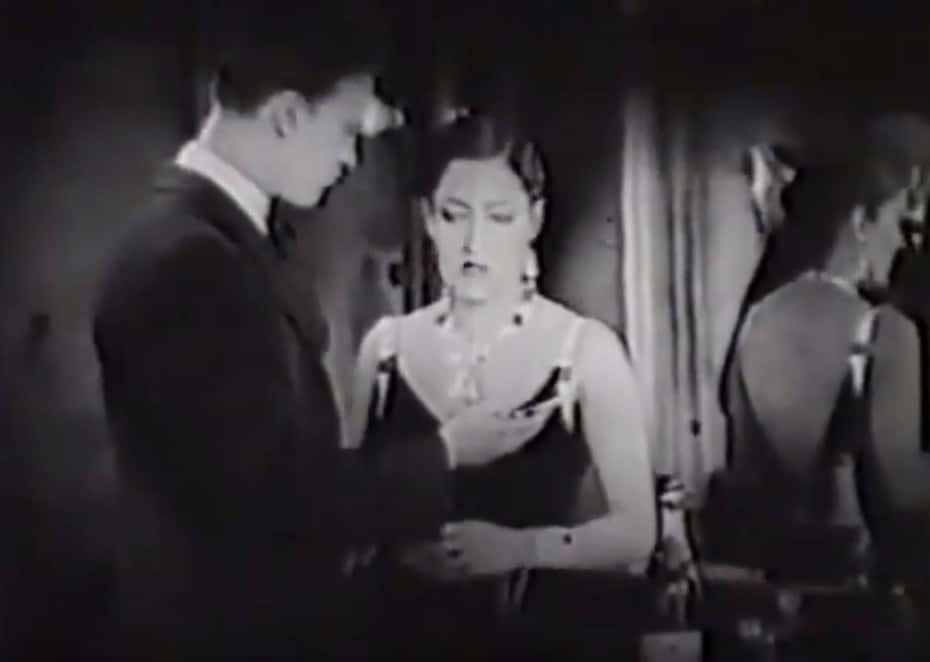 United Artists, The Love of Sunya (1927)
United Artists, The Love of Sunya (1927)
27. Seeing It From Start to Finish
While Swanson predicted that The Love of Sunya would be a total failure, it did garner a standing ovation on its opening night at the Roxy Theatre in New York in 1927. But few people realize that Sunya wasn't the only thing making its debut. The Roxy actually first opened its doors for Swanson's film. Much later, in 1960, an iconic photo of Swanson would be captured for Life magazine, where she stood in the rubble of the recently demolished theater.
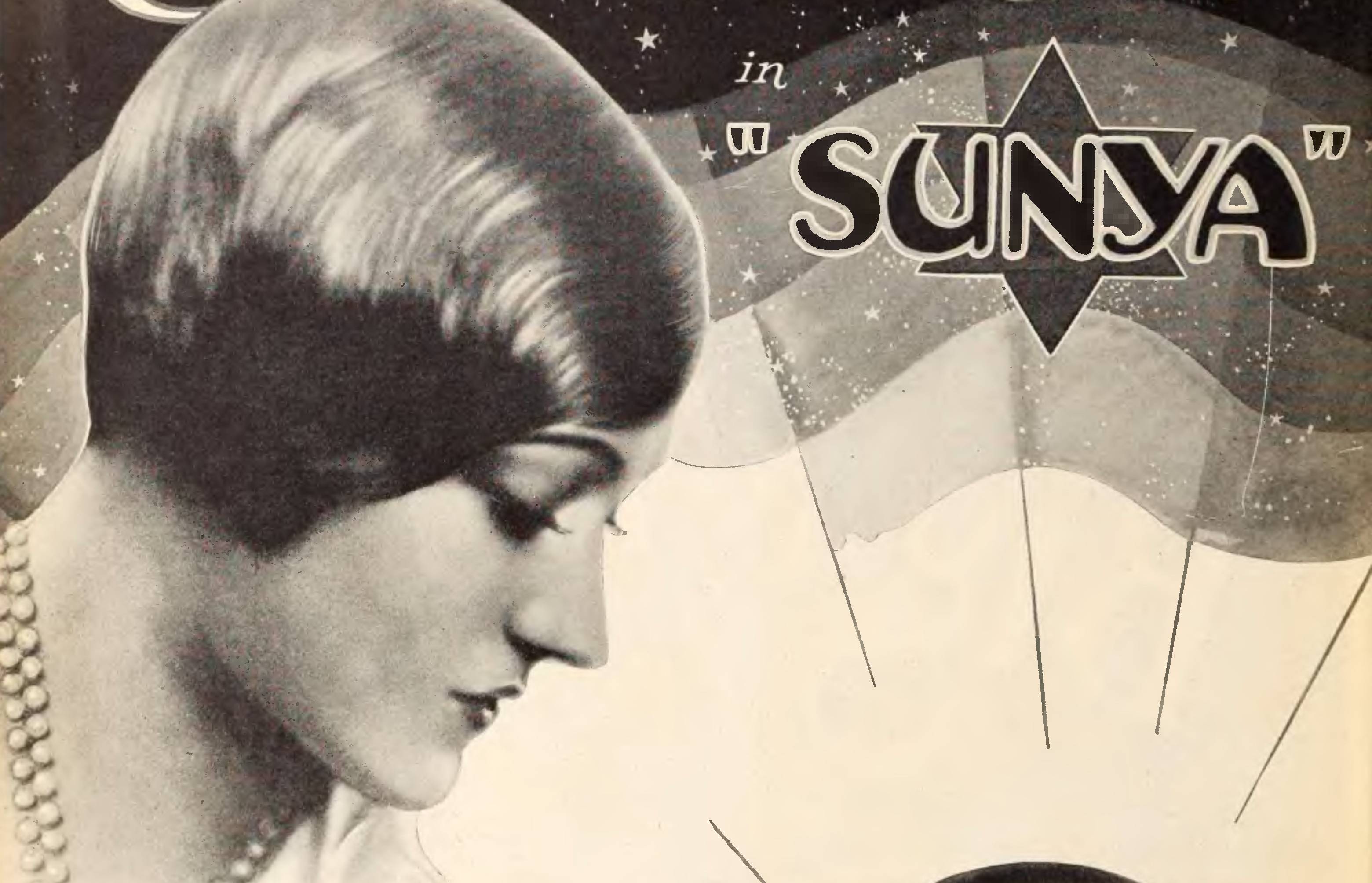 Motion Picture News, Wikimedia Commons
Motion Picture News, Wikimedia Commons
28. It’s My Turn
Swanson was looking for a movie that would be as big, if not bigger, than Charlie Chaplin’s Gold Rush, which had been a huge hit in 1925. Her answer was the film Sadie Thomas, a drama about a “fallen woman” who flees to Samoa and meets a missionary who tries to bring her back to San Francisco. The subject matter made the film hugely controversial—but it also didn’t stop it from becoming a huge hit.
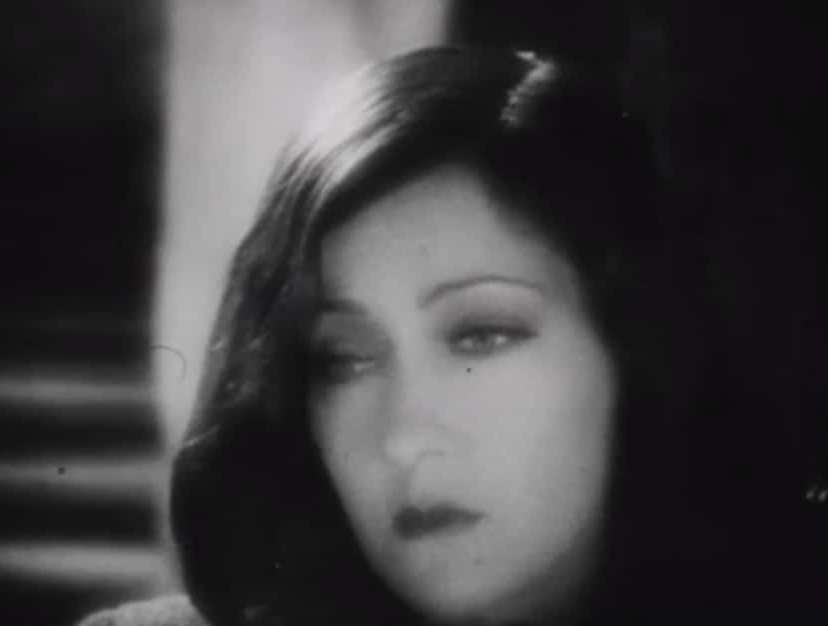 United Artists, Sadie Thompson (1928)
United Artists, Sadie Thompson (1928)
29. Fudging the Truth
Swanson wanted to avoid the formulaic movie plots that she’d been dealing with for the last decade, so she chose a play so controversial that it had been blacklisted—but she had a devious plan to get it made. Swanson took infamous censor Will Hays out for lunch and summarized the play for him, changing the names and major details about the plot before getting him to promise that he’d have no qualms with making the type of film she’d described.
Her gambit paid off—but her troubles were far from over.
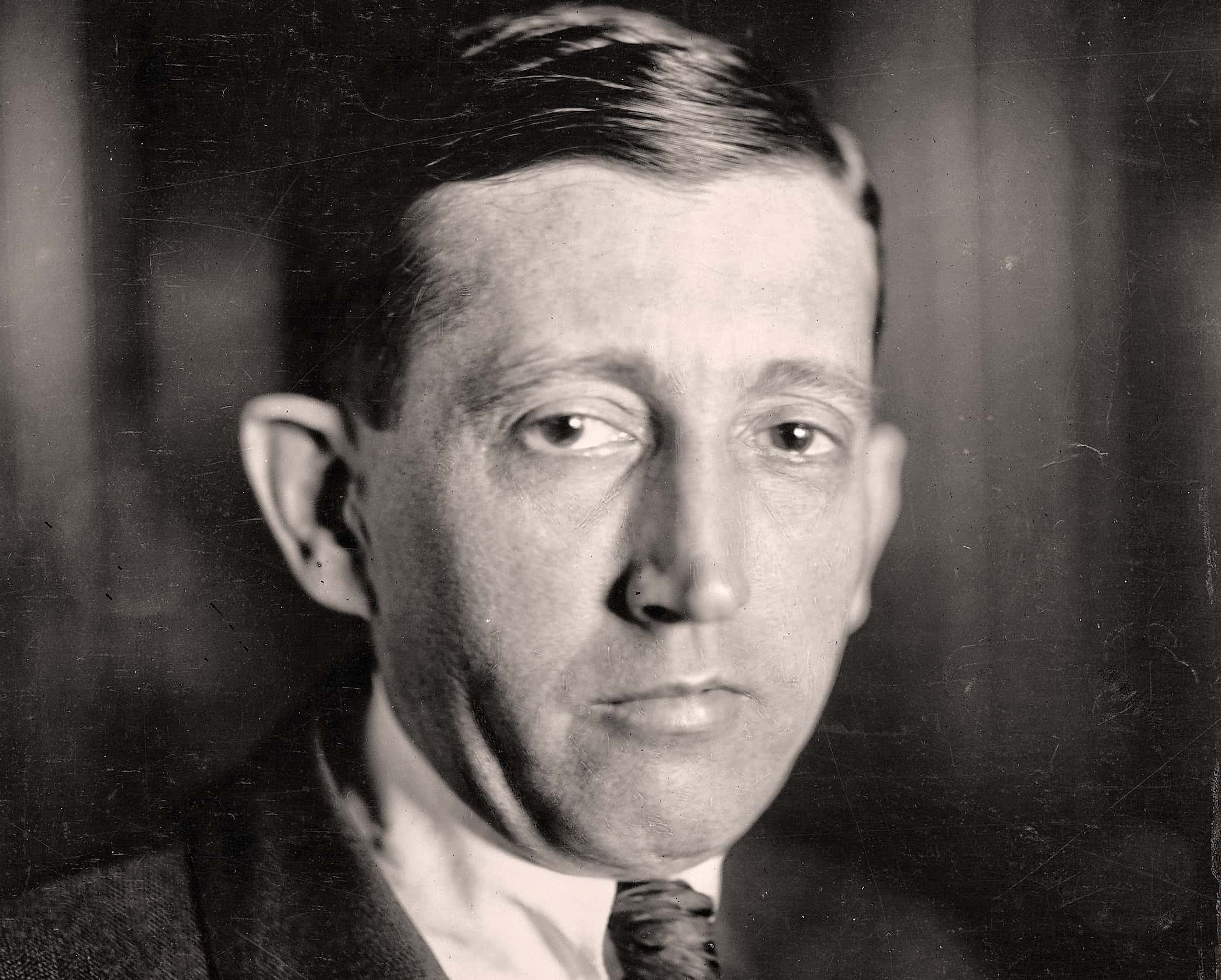 Underwood & Underwood, Wikimedia Commons
Underwood & Underwood, Wikimedia Commons
30. Downs and Ups
The play's authors were furious about Swanson’s modifications, and they weren't the only ones. When it became clear what the play was really about, Hays had the Motion Picture Association of America send a series of threatening telegrams to Swanson. She appealed to them and to theater owner Marcus Loew, and after a period of silence, decided to go on with production.
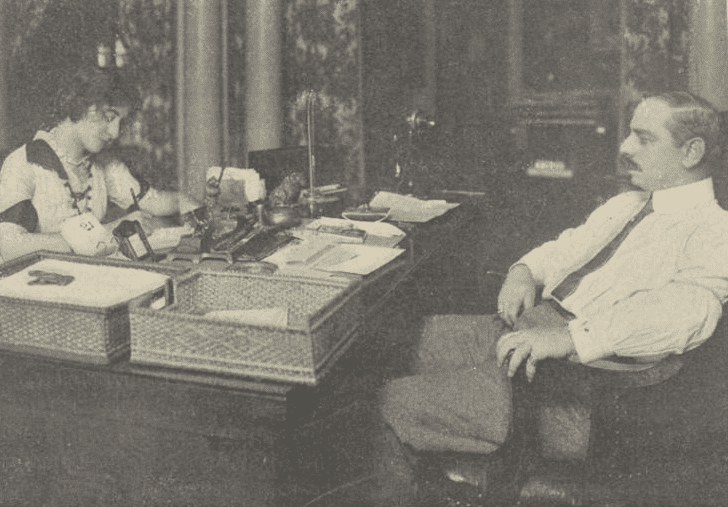 Author unknown, Wikimedia Commons
Author unknown, Wikimedia Commons
31. It Worked!
There were many bumps along the road, but Sadie Thomas was eventually released to great praise and financial success—although it would be Swanson’s last financially successful silent film. As previously mentioned, she was also nominated for the very first Best Actress Oscar for the film—but the film brought Swanson more than just success and acclaim.
32. Running Hot ‘n’ Cold
One of the signees of the threatening telegram from the MPAA had been none other than Joseph P. Kennedy, father of future President John F. Kennedy. He went on to advise Swanson during the production of the film, telling her to sell her distribution rights for Sadie Thomas. Once the film was a success, Swanson realized that she'd just made a terrible financial mistake—regardless, the two started a passionate affair.
33. Mixing Business With Pleasure
The affair between Swanson and Kennedy went on for three years and was an open secret in Hollywood. At one point, Kennedy even gave Swanson’s husband, the Marquis de la Falaise, a job at his film studio—but many speculated that he just did it to get the Marquis out of the way. During their time together, Kennedy produced three films that Swanson starred in.
34. Filling in the Blanks
One of Swanson's films, Queen Kelly, was such a disaster that she demanded the studio fire director Erich Von Stroheim. They bent to her will, scrapping half the film and trying to fill it in with scenes directed by Swanson herself. Due to legal issues with the fired director, it was never released in theaters in the US, but Swanson’s version was released in Europe and South America.
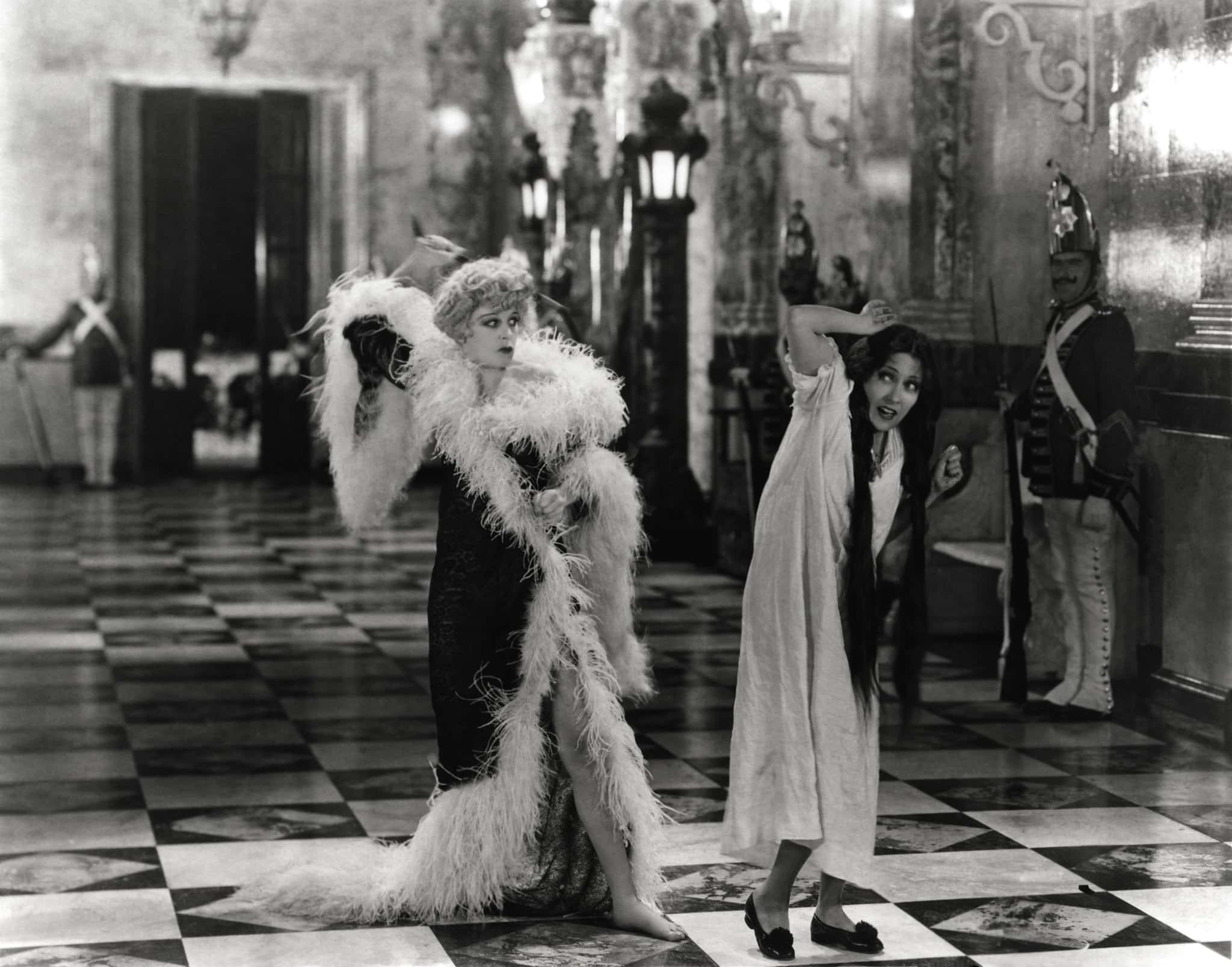 Breve Storia del Cinema, Flickr
Breve Storia del Cinema, Flickr
35. The Talkies Are Coming
At the advent of sound pictures, Swanson and a number of other silent stars appeared on a radio show to reassure the public that they were ready to make the transition from silent film to talkies. While Swanson’s first talkie, the Kennedy-produced The Trespasser, was a hit, earning Swanson another Oscar nod, her career soon began to fade.
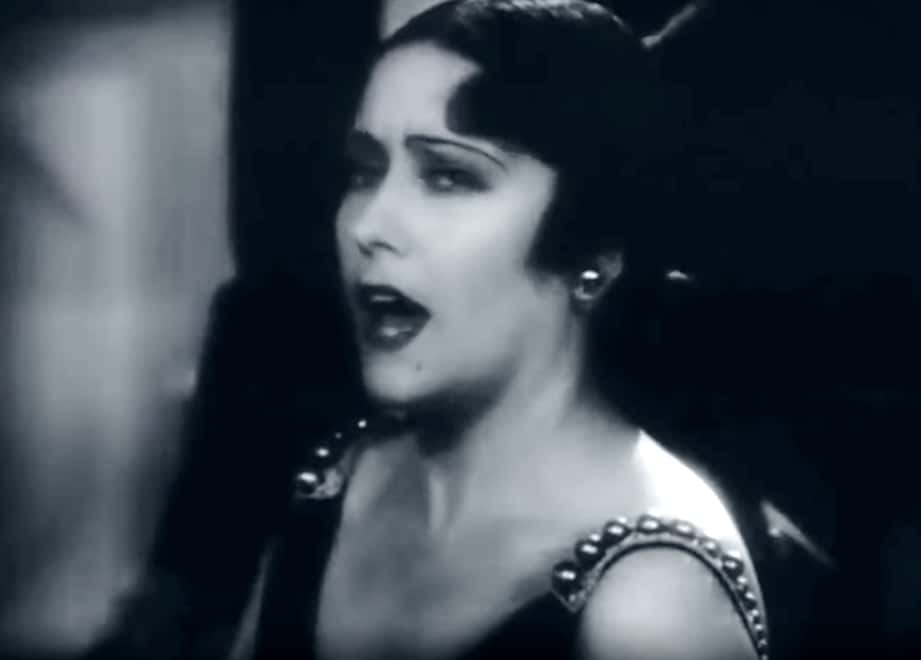 United Artists, The Trespasser (1929)
United Artists, The Trespasser (1929)
36. Big Changes
After a three-year extramarital affair with Joseph P. Kennedy, Swanson finally divorced Henri, Marquis de la Falaise—although it didn’t mean happily ever after for her and her paramour. She and Kennedy broke up as well. After a lot of poor financial advice from Kennedy, she was in bad shape—but when it came to romance, not even a double breakup could slow Swanson down.
37. Infamy and Bigamy
While Swanson initiated her divorce from the Marquis in 1930, she was so impatient to move on that she neglected to wait for the paperwork to be finalized before marrying athlete the Michael Farmer in August 1931. This meant that their marriage was null, so they had to wed again in November 1931—at which point she was already four months pregnant.
38. So, Fourth Time Isn’t the Charm Either
Swanson gave birth to her first child, Michelle Bridget Farmer, in 1932—but it would be far from happily ever after for Swanson’s little family. She and Farmer divorced in 1934, when their daughter was still just a toddler—all because Swanson was hiding a dark secret.
39. Can’t Keep Away
Swanson had begun another extramarital affair while still married to Farmer—this time, with British actor Herbert Marshall. This time, she couldn’t keep the affair from the tabloids. After her divorce from Farmer, she kept seeing Marshall.
 Unknown Author, Wikimedia Commons
Unknown Author, Wikimedia Commons
40. Truth Hurts
Swanson’s affair with Marshall went on for three years, until she made a heartbreaking realization. She had been under his spell, but he still hadn’t left his wife for her—and she began to understand that he never would. Years later, Swanson still wasn't quite over their failed romance. As she later put it, "I was never so convincingly and thoroughly loved as I was by Herbert Marshall."
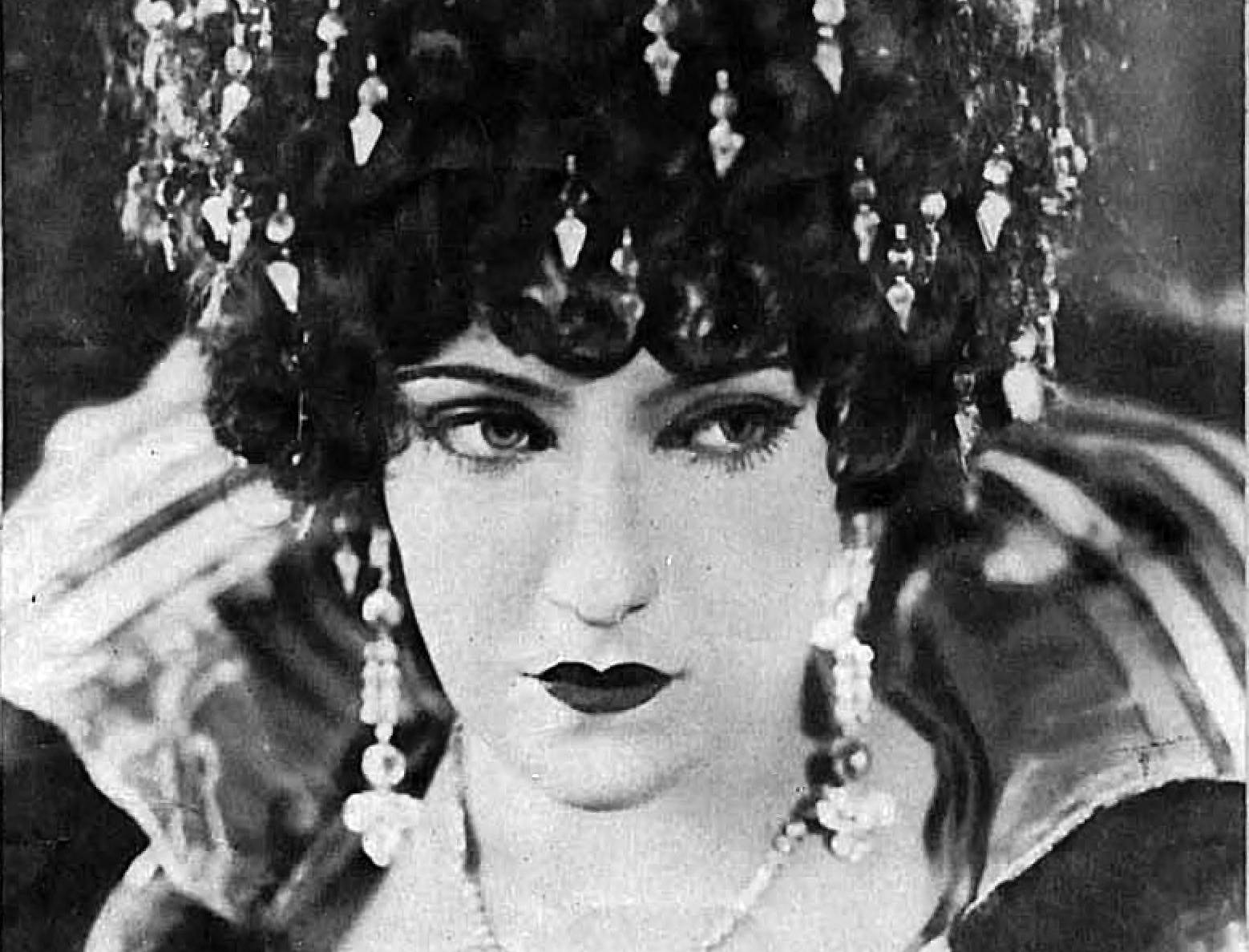 William Eglinton, Wikimedia Commons
William Eglinton, Wikimedia Commons
41. Break-Up to Glow-Up
The lull in her career at the advent of the talkies left Swanson disinterested in film, and packed up and moved to New York, where she began a business that wasn’t only successful, but also heartbreaking in its noble intentions. During WWII, her company Multiprises helped rescue Jewish scientists and inventors, bringing them over to the US from Europe.
42. Renaissance Woman
Just because Swanson had left Hollywood didn’t mean that she’d retired. Throughout the 40s she ran her company, appeared in films, TV, theater, and radio, painted, sculpted, wrote a column, and designed clothing and accessories. She achieved more in that decade than she ever had in Hollywood!
43. Don’t Call It a Comeback
Director Billy Wilder was fascinated by the residents of Sunset Boulevard, the L.A. street where many stars had bought lavish homes during the silent era. He began to formulate a story about a silent film star who faded into obscurity and became reclusive after the advent of sound pictures—the only question was, who could play such a figure?
The character was said to be based on a combination of Mae West, Mary Pickford, and Clara Bow. In fact, both Pickford and West were offered the role, but declined. Perhaps it hit too close to home? Either way, winning the role of Norma Desmond turned Swanson into an absolute icon.
44. Burying the Hatchets
Many of Swanson’s friends appeared as themselves in the film, including Cecil B. DeMille, Buster Keaton, and Erich Von Stroheim—the very director who Swanson had gotten fired from the set of Queen Kelly. Who could be mad when Sunset Boulevard turned into such a success, both financially and critically? It got Swanson a Golden Globe and an Oscar nod.
At its premiere, many of the silent stars who came to see it were said to be absolutely stunned, and its been referred to as “arguably the greatest film about Hollywood.”
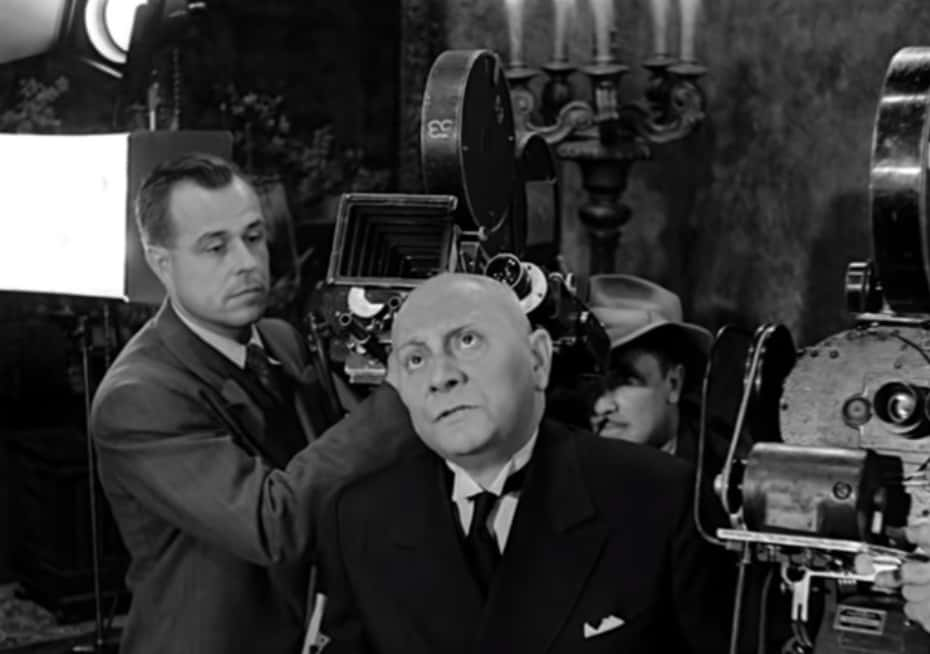 Paramount, Sunset Boulevard (1950)
Paramount, Sunset Boulevard (1950)
45. Name a Better Boss, I Dare You
The infamous last scene of Sunset Boulevard featured Norma Desmond descending her home’s grand staircase to meet a crowd of tabloid photographers and police—who, in her delusion, she believes to be fans. In order to make sure she didn’t trip, she did the scene barefoot. Her performance was an absolute tour de force, and when it was done, Swanson burst into tears.
It was so clearly an instant masterpiece that director Billy Wilder threw a party for Swanson on the spot.
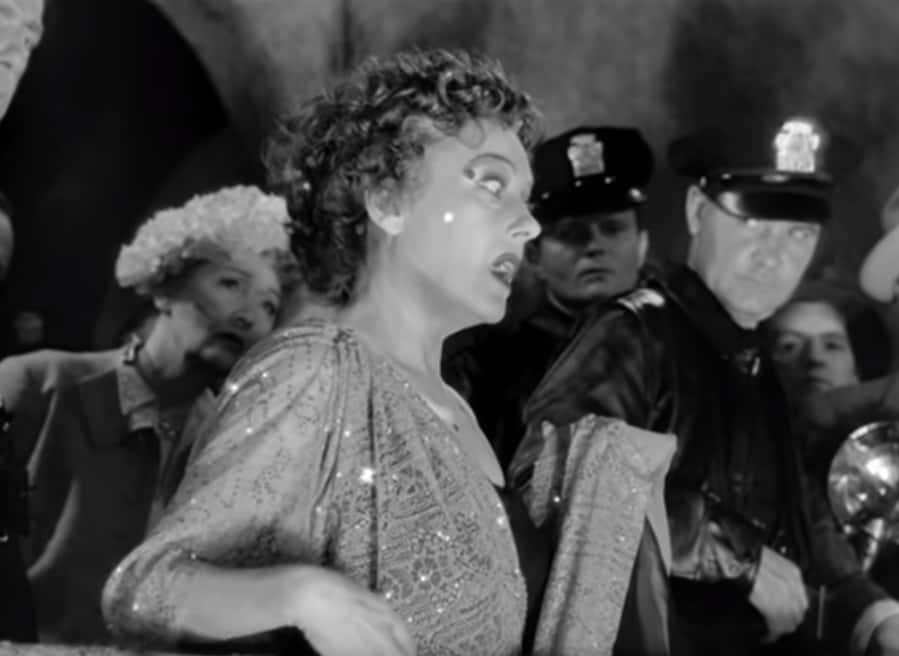 Paramount, Sunset Boulevard (1950)
Paramount, Sunset Boulevard (1950)
46. Thanks But No Thanks
Sadly, the success of Sunset Boulevard had a heartbreaking dark side for Swanson. Many films that followed tried to bank off of the popularity of Sunset Boulevard and tried to cast Swanson. She appeared in one such film, Three For Bedroom “C.” After that, she refused to play a “parody of a parody.” While Swanson had already essentially withdrawn from Hollywood prior to 1950, she basically retired from film after that.
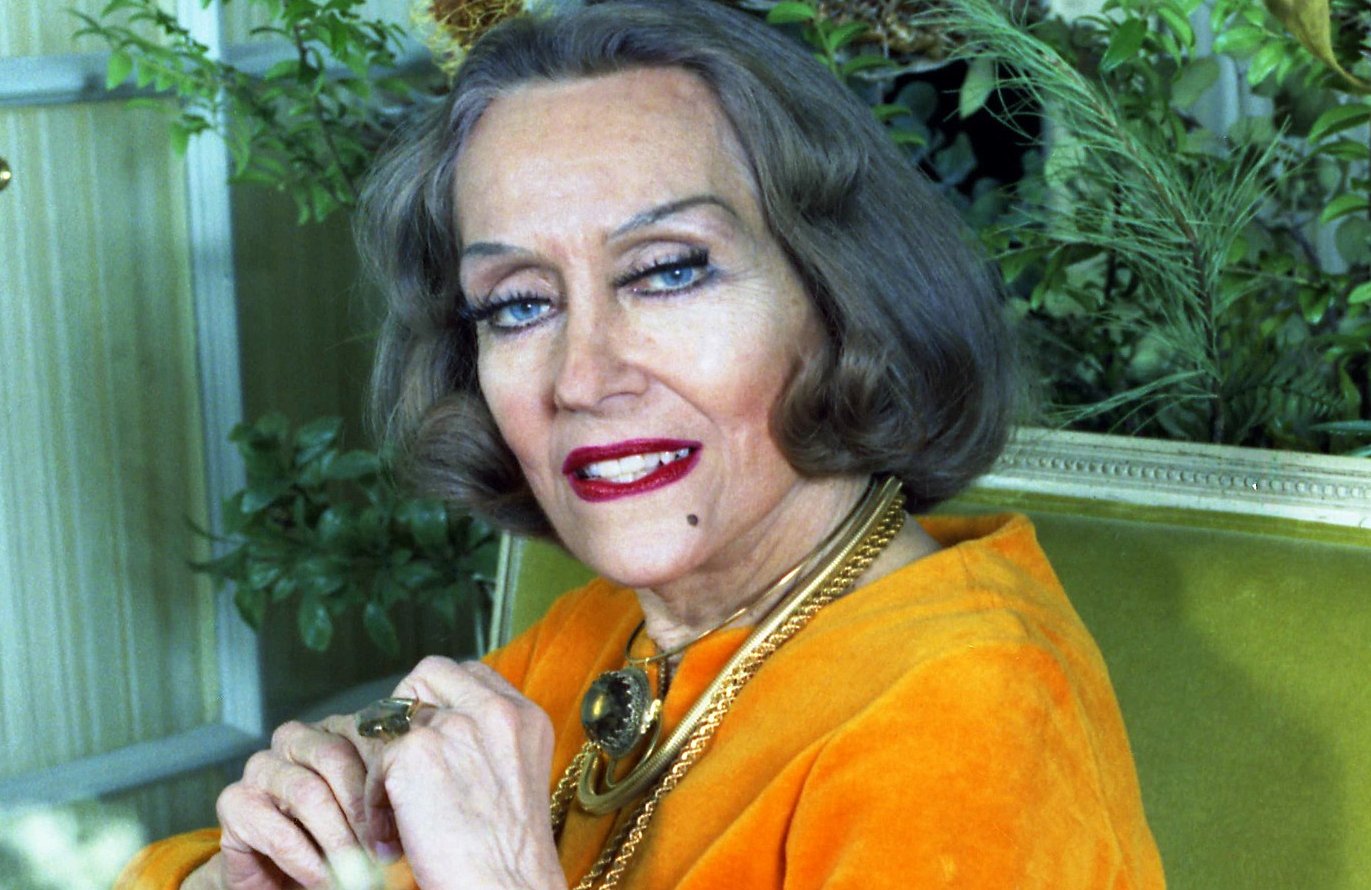 Allan warren, CC BY-SA 3.0, Wikimedia Commons
Allan warren, CC BY-SA 3.0, Wikimedia Commons
47. In on the Joke
However, it was far from a depressing time for Swanson. Not only did she appear in many plays and TV shows, she was such a legend that she even found a measure of success playing herself. On both The Beverly Hillbillies TV show and in the film Airport 1975, she appeared as an exaggerated version of herself.
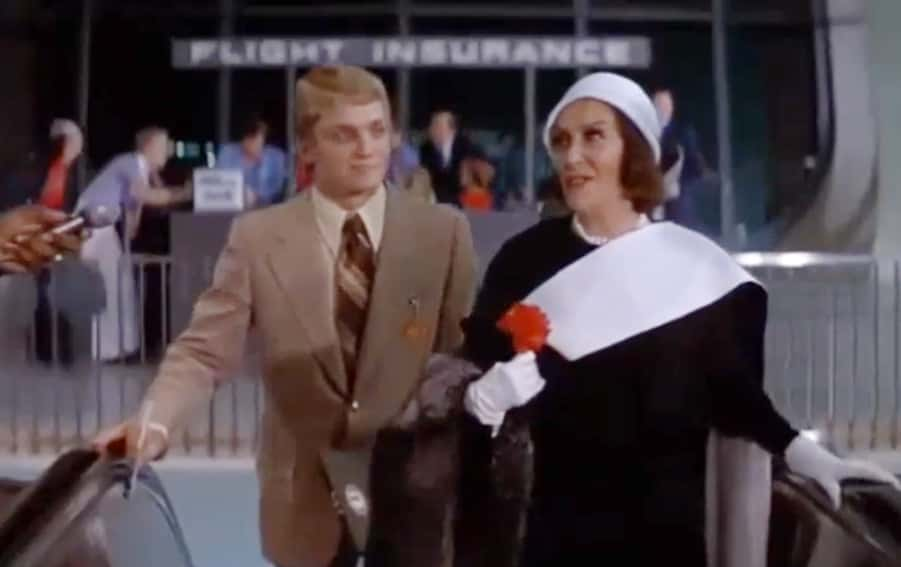 Universal, Airport 1975 (1974)
Universal, Airport 1975 (1974)
48. Stand Back, Amanda Chantal Bacon
Swanson lived the lifestyle of a Hollywood influencer nearly a century before that concept even existed. She adopted a vegetarian diet in 1928, loved health food, and also ate a macrobiotic diet. The cinema star was also an extremely early adopter of yoga as fitness practice—but it wasn’t all granola and downward dog for Swanson. She was also said to have a gold-plated bathtub.
49. Til Death Do We Part—For Real This Time
When Swanson took a break from Hollywood, she also took a break from back-to-back marriages. Between her fifth and sixth marriages, Swanson was single for 30 years—but she made the final one last. Swanson met author William Dufty in 1965. By 1967 they were serious, but perhaps because of her checkered romantic history, she was cautious.
They waited until 1976 to marry, and stayed together until her death.
50. Spilling the Beans
In 1980, Gloria Swanson released her epic 520-page autobiography—the appropriately titled Swanson on Swanson. Most autobiographies or biographies about Old Hollywood stars are as dry as they come, but Swanson didn’t hold back. No wonder she delivered so hard—she was said to have received a cool million in her book deal.
The best-selling book dropped a number of Hollywood bombshells—but one was bigger than any other. Swanson had disavowed her affair with Joseph P. Kennedy for decades, but in her book, she finally revealed the truth. After decades of denial and silence, she finally confessed that she and Kennedy been each other’s side pieces for years in the 20s.
51. Health and Wealth
It was mentioned that Swanson could be considered an early influencer-type, and her last husband was no different. They bonded over his book about sugar addiction, titled Sugar Blues, and he also wrote a book about the mysterious phenomenon known as sanpaku (when you can see the white of an eye not just on either side of the iris, but above or below it as well. Famous people with sanpaku include Audrey Hepburn and Princess Diana).
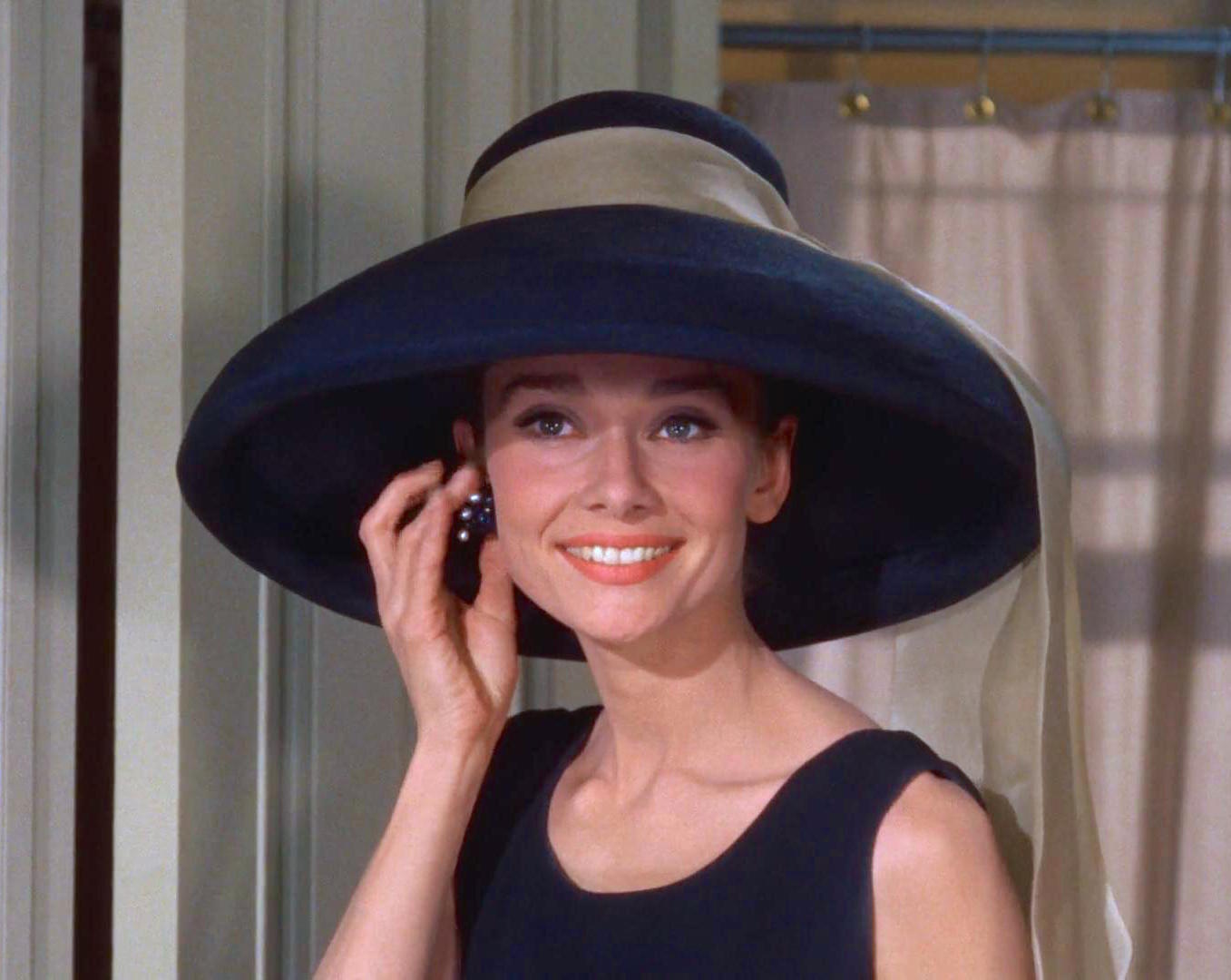 Trailer screenshot, Wikimedia Commons
Trailer screenshot, Wikimedia Commons
52. Come Together, Right Now
We have Swanson to thank for antics of late-era John Lennon. No, really. Swanson and Dufty were passionate about their macrobiotic diet, and so were Lennon and Yoko Ono. The couples bonded and became close friends. Swanson even testified at the immigration hearing in New York that ultimately made Lennon a permanent resident of the US.
53. No One Leaves a Star—Except Gloria
Around the time of her 84th birthday, Swanson took a holiday on the Portuguese Riviera. On April 4, 1973, just after returning home to New York, she passed away from an unspecified heart condition. Dufty showed his devotion with a heartbreaking gesture. While Swanson and Dufty had been world travelers, with homes or pied-a-terres in New York City, Rome, Portugal, and Palm Springs, Dufty returned to his home state of Michigan after Swanson’s death and never remarried.
54. In Good Company
She may not have wanted to play a parody of a parody, but two of comedy’s greatest stars have lovingly parodied Swanson onscreen: Carol Burnett and Kristen Wiig.
55. Those Four Little Words Every Girl Wants to Hear: Parking Area in Florida
Gloria Swanson had two stars on the Walk of Fame, countless awards and nominations, and many of her films were selected for preservation on the merit of their cultural significance—but if that’s not enough for you, don’t worry. She also has a parking area named after her in Florida. Here’s hoping it’s home to some good Florida Man anecdotes.
56. That’s Not Me
After Sunset Boulevard, many were quick to think of Swanson as having the same mindset as her deranged, image-obsessed and delusional character, Norma Desmond. They were surprised to meet her and find that she was sweet, funny, and down to earth. As Swanson herself said, “These people who watch the film now […] weren't alive when I did silent films. They think I was Norma Desmond, and I keep telling them Norma Desmond was a creation, not a real character. I NEVER was Norma Desmond, and I don't know anyone who lived like that!”
It’s hard to blame her.
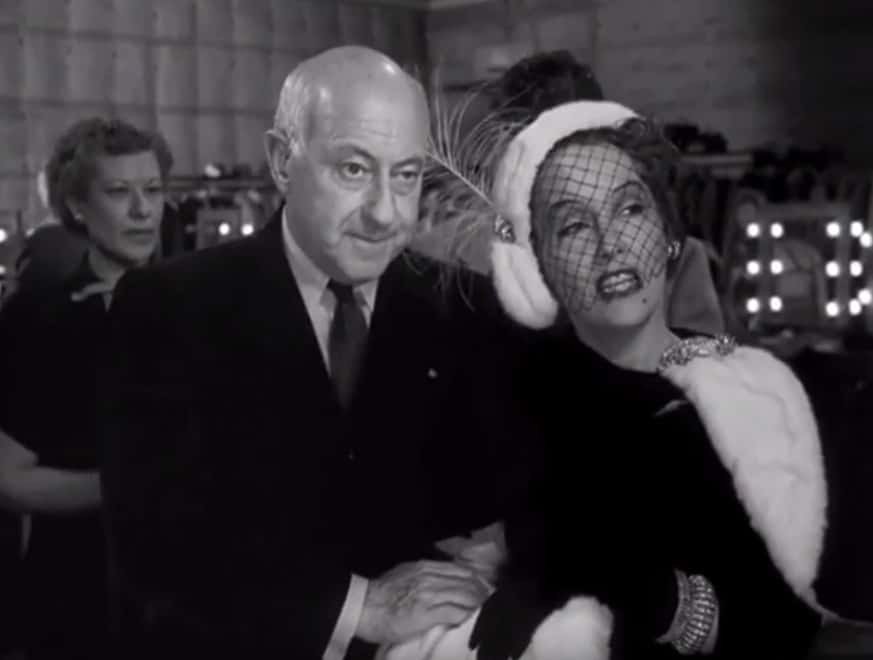 Paramount, Sunset Boulevard (1950)
Paramount, Sunset Boulevard (1950)
57. I Am Big, It’s the Pictures That Got Small
Gloria Swanson’s Hollywood career and outsized personality may have made her the definition of larger-than-life, but she actually stood at just 5’1” tall.
58. Tall Tails
In her autobiography, Swanson certainly amped up the drama when it came to telling her readers about the lions, talking about how dangerous they were—but one story was more chilling than the others. Swanson claimed that two weeks after filming was done, one the lions that she had appeared with in Male or Female killed someone.
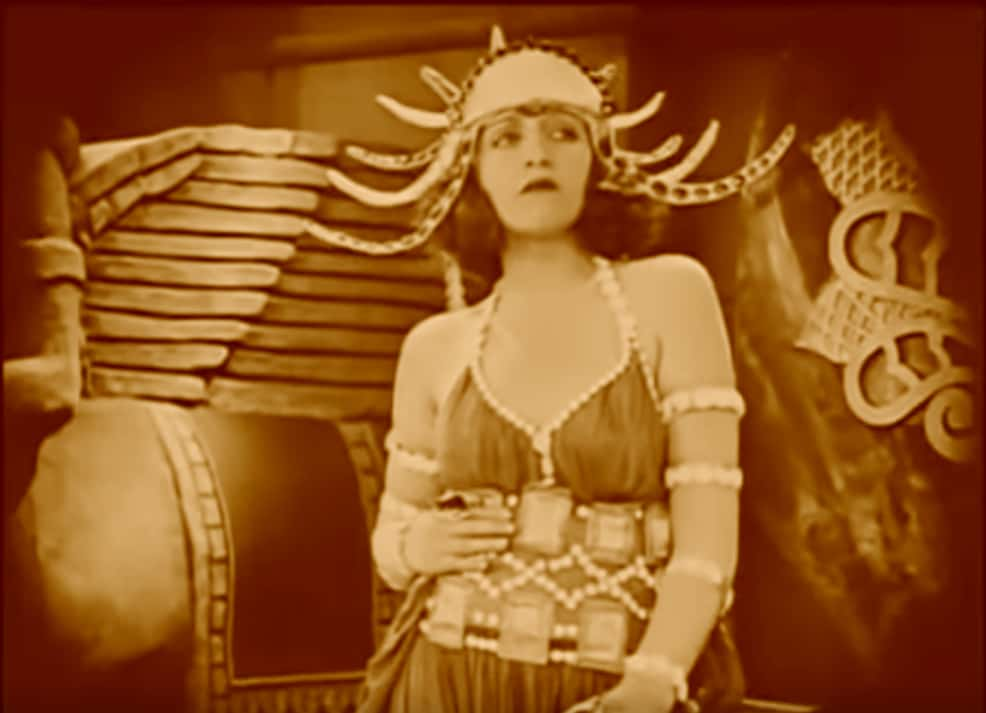 Paramount, Male and Female (1919)
Paramount, Male and Female (1919)
59. Think Marilyn & JFK Were the First? Think Again
It was Old Hollywood, and nobody escaped without some sort of scandal—but Swanson’s secret affairs went beyond the usual cinema scandals. For three years in the 1920s, Swanson carried on a poorly-concealed affair with the politician and businessman Joseph P. Kennedy, father to future president John F. Kennedy. Both Swanson and Kennedy were married to other people at the time.
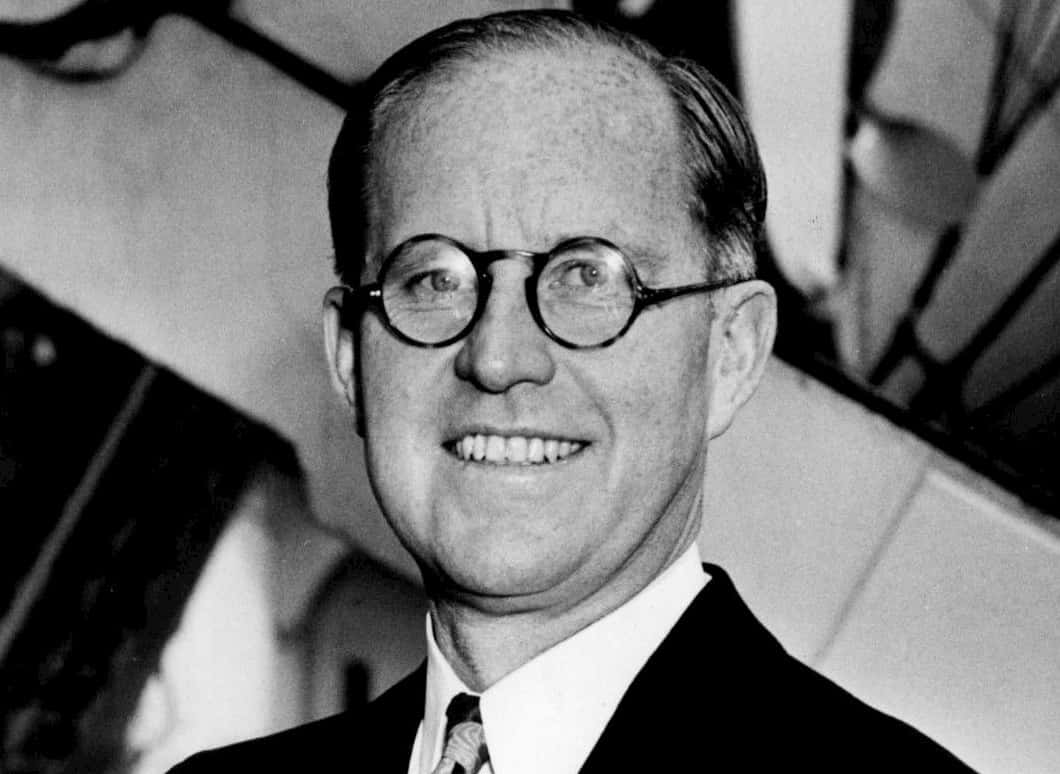 Wide World Photos, Wikimedia Commons
Wide World Photos, Wikimedia Commons
60. Rocky Start
During the early part of her career, Swanson was hiding an incredibly dark secret. When she was just 17, Swanson married fellow actor Wallace Beery—but according to Swanson, her own new husband assaulted her. To make matters even worse, he even hurt her on their wedding night.
Sources: 1, 2, 3, 4, 5, 6, 7, 8, 9, 10, 11, 12, 13, 14, 15, 16, 17, 18, 19, 20, 21, 22

